DUBAI FANTASTICALLY FUNTIONALLY FLAT
AY 2008/2009 OVERSEAS RESEARCH PROGRAM, SPECIAL TERM CHEN ZHONGXIAN CHEONG WENHUI CHUA GONG YAO EVY SUTJAHJO FAN TINGZHANG FABIAN JIANG YIWEI LIM LI WEI ISAAC MD SHAZIRAN DEPARTMENT OF ARCHITECTURE SCHOOL OF DESIGN AND ENVIRONMENT NATIONAL UNIVERSITY OF SINGAPORE DESIGN STUDIO ERIK G L’HEUREUX ASSISTANT PROFESSOR NG WEI QI QUEK LI-EN TAN BING HUI TAN JIA YU FIONA TAN ZI XUAN VANESSA WONG XINNI FAITH YEO HWEE MING CHARLENE
What are the methods used to develop Dubai? Is it even appropriate to look at Dubai when its carbon footprint is so large? What is left of Dubai post economic crisis? Does Dubai’s soul only exist on Google Earth™? Has scale in building design become overrated? Can we continuously find new ideas that haven’t already been realized in Dubai? Will it ever be possible for Dubai to be a city for its people? Does it even need to return to what it was?
Six weeks. Ayacht trip. Afew abra rides. Some camel treks. Many taxi rides. And countless questions later. One book. Dubai: Fantastically, Functionally, Flat.
Department of Architecture
School of Design and Environement
National University of Singapore Lee Foundation
ISBN Number
Dubai/Singapore | |
DUBAI/ SINGAPORE
AN ATLAS OF FABRICATION
FANTASTICALLY FUNCTIONALLY FLAT
ERIK G. L’HEUREUX, AIA LEAD AP, ED./
CHEN ZHONGXIAN/ CHEONG WENHUI/ CHUA GONGYAO/ EVY SUTJAHJO/
FAN TINGZHANG/ JIANG YIWEI/ LIM
LI WEI ISAAC/ MD SHAZIRAN/
NG WEI QI/ QUEK LI-EN/
TAN BING HUI/ TAN JIA YU FIONA/ TAN ZI
XUAN VANESSA/ WONG XINNI/ YEO HWEE MING/
Dubai/Singapore | An Atlas of Fabrication | Fantastically, Functionally, Flat
AN ATLAS OF FABRICATION
FANTASTICALLY FUNCTIONALLY FLAT
National University of Singapore
DUBAI/SINGAPORE
Published by the Department of Architecture
School of Design and Enviroment, National University of Singapore
4Architecture Drive, Singapore 117566
Tel: +65 65163477
Email: akierik@nus.edu.sg
© Department of Architecture
School of Design and Enviroment, National University of Singapore
© Individual Contributors
All rights reserved; no part of this publication may be reproduced, stored in a retrieval system, or transmitted in any form or by any means, electronic, mechanical, photocopying, recording, or otherwise without prior written permission of the publisher.
The publisher does not warrant or assume any legal responsibility for the publication’s contents. All opinions expressed in the book are of the authors and do not necessarily reflect those of the National University of Singapore.
NUS Dubai Enrichment Programme Professor:
Erik G. L’Heureux AIA, LEED AP
Researchers:
Chen Zhongxian
Cheong Wenhui
Chua Gong Yao
Evy Sutjahjo
Fan Tingzhang Fabian
Jiang Yiwei
Lim Li Wei Isaac
Md Shaziran
Ng Wei Qi
Quek Li-en
Tan Bing Hui
Tan Jia Yu Fiona
Tan Zi Xuan Vanessa
Wong Xinni Faith
Yeo Hwee Ming Charlene
2
CONTENTS
Foreword by Erik L’ Heureux AIA, LEED AP & Xinni Faith Wong
Dubai is Fantastically Functionally Flat Reflections by student researchers
Chapter 1: The Territory of Perpetual Change
Reclaiming Nations: Fabricated coastline, Ports and Artificial ski slopes: Stories on topography, Land and Infrastructure
Chapter 2 : The City In Itself
Dubai, Singapore and the World, Linear Cities are Almost All Right, A Fantasyland of Needles and Sheds 118-199
Chapter 3 : The Atmosphere and the Natural Unnatural The Deadly Desert, the Manicured Lawn and the Air-Conditioned Nation 200-271
3
10-15
24-117
Bibliography & Sources 442-443
354-397 Chapter 6
The Flood in the Desert Future Projections 398-433 Biographies 444-445 Acknowledgements 5 Transformation 16-23 Chapter 7
The Universal Urban Code The optimum city model 434-441 6-9
Chapter 4 : The Other City Utopian Visions Built on the Labour of Others 272-353 Chapter 5 : The Old City Today and Tommorrow This City’s Relevant Irrelevance, The Old, The New, and the New Old
:
:
ACKNOWLEDGEMENTS
Urban architecture at the scale of the massive development in Dubai requires new tools of thinking. Approached through an integrative study of the land, territory, atmosphere, hydrology, history, infrastructure, culture, community, and technological attributes, Dubai in these pages forensically uncovered.
Dubai, Fantastically, Functionally, Flat is a look behind the glossy renderings of a future not yet here. The seeming impossibility – the expansion of land into the sea with limitless boundaries; where towers stand above the clouds, clamoring for attention in the baking sun, and for development at the beginning of the millennium. Will we still care about Dubai in ten years? Our bets say yes.
Without pre-conceived ideas or judgment, the students in five teams of three studied the urban context, architecture, and landscape of Dubai, bringing back with them mesmerizing experiences, photographs and sketches to share. Hence, the majority of the efforts of this book is by the hard work and energy of each student. A big “thank you” to each of the students who braved the 45 degree trek to Dubai.
We are also much indebted to Professor Erik G. L’Heureux, for braving the heat a second time for the sole purpose of this study, and for contributing many insights and intellectual stimulation that have been seminal in the development of this publication.
Thanks goes to Associate Professor Wong YC, Head of the Department of Architecture, School of Design and Environment, National University of Singapore, for spearheading this opportunity.
We would also like to acknowledge and thank the Lee Foundation for their sponsorship, without which, this trip and the subsequent intellectual production would not be possible.
Great thanks to the developers: Emaar Properties PJSC, and Nakheel PJSC, for graciously allowing tours of their properties and granting us a closer look at the areas of the new city. A warm thanks to Mr. Quek Kar Tung and Ms Sara Quek for assisting in securing contacts in Dubai.
We appreciate the generosity of our friends in Dubai, who willingly hosted and opened up their homes to us. Thanks also to our new friends, who opened a few windows into the other city, letting us glimpse into a world hidden from public view.
Finally, we would like to thank Dubai for being the urban environment that it is, offering us the chance to examine and speculate over a strange new landscape.
5
FOREWORD BY ASSISTANT PROF. ERIK L’ HEUREUX AIA, LEED AP & XINNI FAITH WONG
Dubai is Fantastically Functionally Flat.
Dubai, a Petri dish of testing of globalized lifestyles and neo-internationalism architectural fantasies, continually builds itself to create a 21st-century Babylon in the desert. This fully artificial experiment is where the natural no longer matters, projections are more important than reality, and Google Earth™ is its most public of public spaces. To live in Dubai is to live in this fantasy – a lifestyle of the popular, the symbolic, and the excessive – the very tenets modern architecture and planning fought so hard against. In this fantasy of images and reality, foreign talents and foreign workers, artificial atmospheres, and oppressive exteriors, Dubai represents a city of architectural inclusion where everything and anything is and just might be possible. In this theater of real estate speculation, now in its current hangover, what will become of the exuberance, the ambition, and the effort in making a resplendent city out of simple desert sand?
Dubai is messy, a collage of varying cities of different identities more or less clustered between a glistening blue sea and an oppressive hot desert. This stretch of built-up territory 6.5 kilometers deep, 65 kilometers long, is an architectural collection of fantasies, failures, possibilities, and nightmares all rolled into one. Construction here does not stop, albeit slowing slightly due to the financial crisis. The towers rising along Sheikh Zayed Road, artificial palm trees of obscene proportions, and gated communities soaked in desalinated hydration speak of monumental efforts to build higher, bigger, and more fantastically than any other city on earth.
Fantastically
Dubai is the hive and the buzz around it. She continuously flexes her muscles in public relations, unashamedly self-publicizing and strengthening her brand, the brand of theme parks and pseudo worlds. Klingmann suggests that architecture is a product that promotes profit and consumption in a capitalist society.1 Architecture becomes a tourist destination, both a commodity and a brand experience. Dubai coughs out enormous amounts of seductive imageries to boost consumption and infects billboards, television screens, and the Internet with them.
To capture the world’s attention today, buildings or cityscapes “must be viewed in states of mediated perception – energized in velocity or information, into the spectacle of the media.”2 The power of representation cannot be ignored. However artificial the stage is, it creates authentic experiences. In this optical landscape seen from behind sunshades or the burkha, “truth is considered profane, and only illusion is sacred.”3 Not so long ago, consumerism turned social life from a state of being into having, from valuing virtues to worshipping material possessions. But what is the fun in having and not sharing your joy with everyone else? Hence, the satisfaction of having is now derived from appearing – gaining prestige from appearances.4 Debord fittingly summarised that “the spectacle does not realize philosophy, it philosophizes reality, reducing everyone’s concrete life to a universe of speculation.”5
Of course, to fill up the contents of their advertising efforts, Dubai must hire architects to generate these flashy carnal renders, thus vindication of the B-grade architects. In this playground, the price tag is removed. Each wannabe is encouraged to bring on seemingly impossible creations and outdo one another in the hopes that they will finally break out and rise up to the ranks of the A-listers. This frantic rush for fame leads to a tendency to design on paper, divorced from site and context, limited only by their wildest imaginings and depending on the mediating power of rendering software and Photoshop to create the architectural experiences for them.
However, this exhibitionistic show of empty icons soon begins to turn into visual white noise the longer you stare. The signified is dead, leaving only the gradually decomposing carcass of The Duck. We have yet to observe any meaningful architecture that goes beyond disembodied images and its greed for tourism revenues. Far from being the instrument of change that allows architects to modify the urban fabric responsibly and create meaningful user experiences, as proposed by Klingmann6, media and branding have been abused in Dubai. The architecture has no added value to its users beyond stripping them of their virgin encounters with amusement park attractions. It is a rollercoaster ride that leaves you empty after, or worse, heaving out the contents in your stomach. But this is fine, because Dubai is not wooing cynical academics. Her prey is the average wealthy expatriate.
6
This expatriate, slathered in sunscreen to protect against the desert sun, is not interested in the boring Dumb Box. He seeks emotional stimuli and fulfillment. Dreamscapes of twisting towers and monstrous malls, painted as a fantasy experience within his grasp – now, that, he is interested in. In his loud Hawaiian shirt, Bermudas, and sandals, is a sucker for the slyly composed imageries meant for the unsuspecting stopover tourist. One, who looks, plays, pays, and leaves in all of three days, is nested in a warm fuzzy haze, blissfully unaware of the well-concealed realities running parallel.
Functionally
Economic abundance and political determinism birthed a neo functionalism: a battle for topography, a laboratory for inventing more speculation, and a history of self-surgery and massive reconfiguration. This city goes against normative modernist planning strategies developed over the last century. There is no urban planning development authority per se; though Sheikh Mohammed bin Rashid Al Maktoum modifies his nation with sketches from above. On the ground, buildings are of various styles, sizes, and massing depending on the decade of conception and real estate valuation at the opening – the absurd proposition of real estate value over any formal or spatial priority. Real estate and capital speculation become economic engines driving developments across land and sea.
Dubai covets the hand of every lucrative business powerhouse available, developing its deep water ports, airports, multi-lane expressways and soon, internal connectivity by rail, to attract investors – firms and their workers – from near and far. These expatriates, who become more permanent residents of Dubai, will eventually glimpse through The Spectacle’s split seams to discover that the magic is not so omniscient. The eradication of old districts to pave way for wider highways more suited for smooth traffic flow seems logical in the automobile spectacle, but the city spectacle dictates that they should retain the Old City, with all its unforgiving small lanes and run-down apartments for touristic purposes such that day-today living is now, too, on show. A similar example is quoted in Debord’s book. Perhaps u can think of a more apt one? Incongruence means that the consumer will not be able to experience the spectacle as a whole, leading to disappointment.7
Communities are for sale in Dubai. Lifestyles – a semi-detached in pastel colours; a green lawn that does not overgrow – no worries of lawn duty; private schools; mosques; unnecessary internal shuttle bus – everyone has cars; and supermarkets located unbelievably near; complete with discreet security guards – are lovingly placed into neat little packages along developers’ conveyor belts, carefully sealed and promptly delivered to any willing and paying customer who desires to associate themselves with the prestige inevitably attached to this community. Selling a community as though it can be purchased with the right villa speaks of a globalised situation of spatial irrelevancy. The objectification of everyday life, reducing it to superficiality, further degrades human life. Sadly, the consumer is unable to see beyond the marketing enterprises of the developers to the glorified prison that is the gated community.
In this functionalist economy, two of the few surviving spaces of interaction and exchange are probably the hotel lobby and the food court, where people wait and eat, in the false illusion of climatic comfort provided by the almighty air-conditioning. Tourists and foreign residents alike find comfort and familiarity in these giant banal affairs called malls, when they really just paid good money for more of the same – sameness which they could probably find back in their own developed nations. People are chauffeured from gated home to hotel to mall; the street has dissolved into the need to shun the uncomfortable outdoors. Public space is fully encased within the interior in massive sheds of capitalistic functionality.
However, the crumbling of the street also means the powers that be have territorial domination and control over the population. The manpower behind these amazing feats of urban creations is imported, along with all the different architectural objects seated on their thrones along Sheikh Zayed Road. In a nation where only a fifth of the population holds exclusive citizenship rights, it is no wonder they should worry about manipulating and monitoring the rest of the eighty percent comprising foreigners. The isolated sprawl caused by its built-on-a-whim urban configuration effec-
7
tively separates the workers from the capitalists. No in-betweens, only nothingness – space is their best defence. Assign an area on the map, preferably along a discreet periphery, move the workers in, shuttle them about only from their allotted one-room of thirty to construction sites and back, all without disrupting the lives of the affluent locals and tourists, feeding the illusion of towers miraculously popping up overnight. Maintaining the not so invisible class divisions and preserving class power has never been so easy.8 The exploitation of international labour is Dubai globalized, in the best and worst sense of the word. The foreign workers, their complaints and cries muzzled by distance, live in isolated togetherness – a pseudo community in a very real cage.
Flat
Dubai is an astronomical parchment of historical absence, a natural tabula rasa, therefore an abstract plane of possibilities. Coupled by the sheer ambition and urban will to overcome the city’s geographical realities of a city built on sand, Dubai has proceeded on a path of massive environmental reconfiguration transforming the desert into a temperate-like environment of lawns, palm tree landscapes and massive interiority cooled to a comfortable 20°C (or -1°C at Ski Dubai). The urban landscape of transformation and fabrication through land reclamation, hydro suburbias, and the carved desert represents landscape urbanism of the actual. What is less apparent is that their efforts are built on a foundation of tremendous and complete fear. This is a fear of the most heinous and yet entirely productive insecurity. This is a fear that the oil revenues will run out, that the oasis in the sand will be swallowed by the sun, a fear that the desert horizons will move in like an advancing army taking over the city plot by plot, fortune by fortune, dune by dune of glistening silica. Especially for the towers of glass being continually sandblasted with the desert, all efforts at the unique are neutralized by this haze of beige that sits over the city.
Likewise for Singapore, the veritable urban model inspiring Dubai’s development, urban development is predicated on a latent trepidation. Both political and spatial, Singapore’s fear is that it will be rendered irrelevant once its port is no longer needed. Who cares about a city of 4.8 million
anyway? But more than anything, Singapore fears that the green jungle will take over, ruining 44 years of cultivation. Nightmares of a return to the mouldy, decaying, and ulu kampong (local village) drive the city to trim, repaint, and rebuild in an ecstasy of architectural progress. But for Dubai, the forest is a welcomed gift – a refreshing green with every tree shackled to a leaking hose, dripping a dollar per liter of liquid gold, eventually returning to the desert sand’s hungry lips. For both nations, the image of progress and prosperity must be kept up regardless, as such, they turned to the sea and the Dutch for answers.
The conglomerate of infrastructural know-how: Von Onberg, helped both nations construct some of the most tremendous increases in acreage, simply by sucking seabed ground and spewing those very contents over an arching rainbow of technological might into reclaimed land. Thirty percent of Singapore has been added, merging island to island, in an immense “industry in a park” fabrication of unprecedented scale. The official size of Singapore is unknown – it keeps growing by the hour; even Google Earth™ cannot keep up.
Likewise in the dunes of Dubai, the Dutch machines scrape underwater deserts – or at least this is what the official description is – regurgitating them into fantastical real estate speculation engines seen from satellite imagery above. The pearls were never this valuable to the indigenous diving industry of old to conceive such oceanic violence. These artificial landforms vary only in plan, flattened by limits of reclamation and distinct only via the eye of Google Earth™. Here is where land reclamation and land art, unfortunately very popular, merge into a radical proposition of palm islands, the world and universe, all competing for the investment dollar while fighting back the erosions of strong gulf currents. Seventy hours was all that was needed for the entire palm islands to be sold. Fantasy land becomes one of the most desirable addresses on earth. But only if you sell it fast. Erosion is strong, the desert winds powerful, and a crash in the economy might find you caught with a sinking villa on a palm frond.
Conquering the land and sea are only two steps in Dubai’s reconstructive surgery. The equivocation of the atmosphere, temperature and humidity constitutes the most obvious triumph its people are able to appreciate. Artificial climatic control in the form of
8
air-conditioning has inverted what used to be public space and caused the death of the exterior. Big sheds and district cooling stand in outright denial of the harsh outdoor climate. People spend most of their time in the extensive interiorized world, basking in a watered-down if not a completely distorted version of the external environment.
To maintain this environmental amnesia, these sheds are interconnected by expressways, carrying mobile versions of the air-conditioned sheds, so the population can travel in as uninterrupted a route as possible, keeping their kanduras and abayas delightfully dry for the duration. This automobile city has inadvertently constructed their large expanses of freeways to its advantage, allowing you to marvel at the dynamism of towers as they appear through the speed you pass them by, or to behold its massivity from the interior of a cab during a pause in traffic, barely able to see past half of the skyscraper. Seldom are you allowed the opportunity, mainly because of inaccessibility via walking, to put the buildings under a microscope for closer examinations, a conspiracy to upkeep the illusions of grandeur.
Inland, the city seems to go the way of casinos –importing slices of certain cultures and architectural typologies, demoting them into themes and jumbling them up into a mega Disneyland-type urban orgy. The result is a city of cities where new worlds lay side by side, new thematic cities hold hands and rub up against one another. Scale becomes overrated and urban hierarchy abolished; impure architecture of violent scale juxtapositions laughs contemptuously at the idea of unity and salutes a collage of autonomous visions. But like the casinos in Las Vegas, they are bound by one condition: that of continual change. Cycles of three-year leases allow architectural reinvention on a seasonal rate. As Schwarzer observed, “the modern search for progress and newness often leads to a paradoxical repetition of scenery and experience...the feeling of having travelled far and gone nowhere, is by now familiar.”9 These forms in Dubai, an addiction to renovate, stretch, mould, and exaggerate their physical and built landscapes to overcome an anesthetization by loss of novelty.
In Dubai, fear becomes the operative engine for progress, for tremendous urban modifications. Fear of nature and the progress of the city are inextricably linked in a fight to the finish, a battle of idea or reality, of city versus nature, human versus wild.
This is a city of cities of perpetual becoming –where waiting for the proper calibration of scale or atmosphere at the end of construction is a fallacy. And yet now, with a crisis of environment meets economic world proportions, fear of the wild has reached a global scale. Shrinking glaciers, higher temperatures, expanding deserts, plaques, and rising sea levels all threaten the very ambitions of the urban world. Yes, skiing in Dubai is entirely irresponsible. Boasting about the amount of freshwater condensate required to cool the Burj Dubai makes the developer look like a moron. And additional highways crossing the desert ensure an economy of petroleum right when the world is looking for alternatives. Despite the many horrific alterations Dubai has made of its own environments, if any urban city will transform to ensure its survival, it will be Dubai. Their lives are at stake.
References
1. Klingmann, Anna. (2007). Brandscapes: Architecture in the Experience Economy. Pp.4. Cambridge, Massachusetts: MIT Press.
2. Schwarzer, Mitchell. (2004). Zoomscape: Architecture in Motion and Media. Pp. 14. New York, New York: Princeton Architectural Press.
3. Debord, Guy. (1967). La Société du Spectacle (The Society of the Spectacle), trans. Ken Knabb. Retrieved from, http://www.bopsecrets.org/SI/ debord/index.htm. (As cited from the preface of The Essence of Christianity (2nd ed.) by Feurbach)
4. Ibid., Chapter 1: The Culmination of Separation, para. 17.
5. Ibid., para. 19.
6. Klingmann, Anna. (2007). Ibid., Pp.8.
7. Debord, Guy. (1967). Ibid., Chapter 3: Unity and Division within Appearances, para. 65.
8. Ibid., Chapter 7: Territorial Domination, para.
172.
9. Schwarzer, Mitchell. (2004). Ibdid., Pp. 25.
9
EMPTY VESSELS MAKE THE MOST NOISE
A large part of the desire to visit Dubai stemmed from all the rendered images making their rounds in inboxes across the globe. A few years ago, as a young architecture student, I greeted the flashy images with sighs of wonderment and exclamations of awe. Now, better-informed and a little jaded, I can only look onto those same images with a raised brow of scepticism and maybe disgust.
On the surface, Dubai beams with positivity, made of the stuff of dreams and fantasies. What is fascinating is the layer of hype that Dubai has wrapped herself in, like a fur coat – thick, and at the expense of another.
Where were all the romanticised buildings set to take the architecture world by storm? Stuck in a contract that is questioning its ability to be fulfilled courtesy of the 2008 financial tsunami, that’s where. Dubai gloats over the statistic that 15-25% of the world’s cranes are hauling concrete and sand there. Now those same machines blatantly testify their state of uncertainty, frozen in mid-motion for ambiguous lengths of time. Completed projects pale in retrospect, failing to live up to its glorious rendered vision.
It seemed all that were created and produced were for the sake of the hype. Everything had to outdo the other. Taller, bigger, more! As a shopaholic, I should be extremely pleased with their monstrously huge malls, packed with all sorts of spectacles –giant aquariums, dancing fountains, waterfalls, iceskating rinks and even a ski place in the middle of a blistering 45deg day! But after a few trips around them, I began to feel, dare I say it... bored. Except for a few brands, there was not much I could get here that I could not get back in Singapore or any other cosmopolitan mall. What’s next? A few polar bears in the snow to “add life to life”1? The XXXLsized malls also meant that it was ridiculously difficult to get from one point to another (which was also why they had buggies ferrying you around, think “international airport”).
Everything is about propaganda. Visiting the major developers Emaar and Nakheel felt like entering another state; even crossing the borders between Dubai, Sharjah and Ajman is not this in-your-face. Flags bearing their name will proudly announce that one has entered Emaar-land.
Just riding in one of their million cabs along the highway, one will definitely not miss the sometimes serenely smiling, sometimes intensely serious portraits of the governors and/or their sons watching over the roads, reminding you that yes, they are in charge of this amazing vision of a land.
As any city management textbook will dictate, a modernizing city should not lose its cultural roots. To cover all bases, and god forbid, to lose out, Dubai has also jumped onto this bandwagon. However, if sticking some wooden posts onto reconstructed buildings and then calling it a souk constitutes a job well done, the planners have another think coming. The idea behind the Persian wind tower technology is still undoubtedly useful if adapted to current contexts. But constructing empty shells of wind tower typology is a joke in this country that breathes air-conditioning. This superficiality only chalks up another point to tourist advertising.
Perhaps the only redeemable area of Dubai where genuine Dubai-an life can be observed is in the old city. Not the fake souks that all guide books demand you visit so the shopkeepers can rip you off, but the streets where old apartment buildings still stand. Each building shell is diverse from its neighbours, yet in their individuality belonged together from the way each is moulded by the other formally. It is also there that the majority of the population, i.e. the working class expats, carry out their daily rituals and activities. It is a giant contrast to the plastic smiles slapped onto service staff in the malls.
The amount of hypocrisy available is tangible enough to slather on like sun block. Dubai boasts of its tolerance towards all religions and cultures, yet you are advised to cover up before you head out. Go out a tad too scantily, and you would be faced with either leering or judging stares. The abaya is becoming more and more fashionable, drawing more attention when it should detract. What is beneath the black cloth may be even more audacious – again, it speaks of more facework. Emiratis in full traditional dress can be partying in a bar, intoxicated, after which they would probably answer the call to prayer in the early morning, that is if they are sober enough.
10
But hey, we are not the ones doling out judgement are we?
What is scary is how most of the guide books and websites remain as bright as the Dubai sun when it comes to Dubai’s current status and future prospects. Serious issues would surface only to be drowned under more positive hype, their severity undermined. Albeit, guide books are meant to do one thing: convince you that the destination is worth visiting.
I would tell you to go see it too. But see it for what it is, not the fantasy painted over your eyes. See it not as the tasty and convenient McDonald’s meal but fat that is going to end up choking your artery. See the hired help driven to exhaustion concealed behind the shiny deep fryers. See the authentic local food stalls located away from the buzz. See beyond the colourfully-wrapped box and prepare to stare into its non-existent contents. Because in Dubai, what they don’t tell you is probably what is all there is.
With images of modern, tall and grand-looking buildings painted across my mind, Dubai was quickly nicknamed “Glitterland” by me. The excitement. The hype. The self-hype.
AND the numerous ‘Aladdin’-setting dreams that soon followed me through the nights. It almost seemed like I was heading for a trip to heaven. Even after doing some pre-trip research and having read a few articles discussing the ‘darker’ side of Dubai, my hopes were still high. After all, there has got to be something there to get the world’s notice, right?
Then the day came. Dubai slowly unveiled. In 10 days and 9 nights, we witnessed the ambitious, provocative and ever-seductive displays of Dubai.
The tale of “Glitterland” was not a lie.
It is a fact that the desert landscape has been transformed to water, greenery, fertile earth... and more. Scale, proportion and conventions never seem to be part of the equation for this city. What they envisioned, they made possible.
Wong Xinni Faith
But “Glitterland” in reality is more than that. There are pockets of empty vastness among the dense build-ups. There are hungry cranes ready to build, next to empty towers waiting to be used. There are infinite rows of shops catering to but a handful of shoppers. There is the insane heat hovering in the streets, and cold air stored behind walls. There is the liberal Western lifestyle for sale, and a conservative Muslim one being practised. It is a city full of strange sights and experiences.
The trip to “Glitterland” seemed like a dream that never did happen. A sense of surrealism lingers. I could never identify an essence that belongs authentically to the city - except perhaps its insatiable hunger, and its richness - existing in contrasts and irony.
It is as though in all its desire to possess everything the world can offer, the city forgets to offer a taste of herself.
Evy Sutjahjo
11
1 a much advertised slogan from du, a major telecommunications company in Dubai
“GLITTERLAND”
Dubai is a magical city, a city of crystalline towers, gushing fountains and green grassy fields sprouting from the picturesque landscape of the Arabian Desert. With shells and corals encrusted into its walls, and marble and gold paving its streets and claddings its walls, Dubai is a utopia born of the shifting sands.
But Dubai is paper thin. Look at the obverse to see the contrast. Dusty labour camps and construction workers are on the periphery, toiling away under the sweltering heat. Cranes dot the horizon as often as skyscrapers. The atmosphere is filled with dust and sand. Blank facades mask another Dubai: dystopian, congested and sweaty.
Each Dubai is separated, unable to look each other in the face. Existing side by side, divided by a sheer veil, each side occasionally catches glimpses of the other.
DUBAI’S EXCESSIVE EXCLUSIVITY
“As we move forward, there is no room for red (finishing) lines because we see only the blue of the sky and the sea. Blue is the colour of ambition; we like it and it likes us.”
- Sheikh Mohammed bin Rashid Al Maktoum
Dubai is a city flourished and sustained by the media, the Mecca of dreamily-rendered buildings. Of the world’s developments, Dubai often prides herself as a futuristic city ahead of her times. What I found particularly unique about Dubai is the utopian image she portrays to the rest of the world. An image of idealised urban spaces that diminish gradually as one begins to see Dubai in reality. Boasting of mega skyscrapers and shopping malls often published in architectural magazines, Dubai however, seems to lack life. With huge ten-lane highways separating the different districts, there is little room for the pedestrian. Everyday activity is confined to interior spaces.
THOUGHTS ON THE OLD CITY
The relevance of Dubai’s old city becomes irrelevant while these same elements gain relevance in the new city.
An old school courtyard becomes deserted, while the central square in the gold souk of Dubai mall becomes a place of respite within the excessive maze of corridors.
Cool narrow alleyways of Deira are heated up by air-conditioning units while the waterways of Palm Jumeirah serve to cool and refresh.
Wind towers are covered up and rendered useless while a new typology of air-conditioning condensers fill up the flat roofs of new buildings.
Add-on shelters in the old souks seem out of place while traditional arch roof and tent roof typologies brighten up shopping malls.
An ironic turn of events.
Lim Li Wei Isaac
A city only accessible by the automobile, Dubai is a city of harsh exclusivity and scary emptiness. Skyscraper after skyscraper, left vacant and glowing in the searing heat, passes by swiftly as one commutes from one place to another. With different districts planned out for individual functions, the areas are void of any “closedgrained diversity of uses that give each other mutual support” as proposed by Jane Jacobs. Rather, Dubai seems to be a place of many cities within one, where its main roads serve merely as a transitional space, void of any activity other than mundane commuting.
Dubai is a city of extreme contrasts, with a skyline filled on one end with ultra tall, cut-andpaste skyscrapers, and on the other with low-rise old buildings.
The demographics of the people with their stark disparity in lifestyles lead to gated communities in which each community have little or no contact with the other. With the city left largely empty and lacking in activity spaces, is what we see really the blue of ambition or that of depressing decay?
Tan Jia Yu Fiona
12
MAGICAL
DUBAI IS A
CITY
Quek Li-en
DUBAI DREAMING
“This is so surreal,” I remember saying under my breath as our plane descended upon Dubai International Airport (DXB). What was so surreal? The khaki landscape seen from the plane and that we were in the Arabian Desert, let alone the Middle East. Blame it on Dubai being “exotic-ised”.
Being engulfed in the summer desert heat is another sur-reality. I battle with Humidity and Heat every day in Singapore, but in Dubai, the war with them rages fiercer than ever. Every droplet of sweat forces its way out of every pore of your body, leaving you pretty much like Dali’s melted clocks. We are perhaps living in a Persistence of Memory, though this is not the end of surreal Dubai.
There are actually two cities in Dubai: Chilled and Un-chilled. In the former, the miracle per square meter rate is so high that it would be a sin not to include it in the Guinness Book of Records. Where else in any other desert do you see a congregation of water, ice, fish and air-conditioning all at the same time? We like spending time in Chilled. Being in Chilled is like being in a dream, a good one that is. Very seldom would you want to leave Chilled for Un-chilled during the summer months. But we do crave a nightmare or two once in a while. It is amazing how these two cities live alongside each other, establishing a seemingly symbiotic relationship. Denizens of Un-chilled are like worker ants, constantly flowing in and out of Chilled, providing services and what not, and at the end of the day, retreat back into their cells (quite literally).
Nothing gets more surreal in Dubai than the mere existence of buildings. Built on sand. Considering its location in the desert, the glass-and-metalsheathed constructions seem temporal, almost like sandcastles; needles stuck playfully into sand. The juxtaposition of glass, metal and concrete with sand just does not seem right.
When we returned to DXB, the surreal chaos of long queues and inefficiency materialized. “Will you return to Dubai?” I asked a friend as we walked towards the plane. He winced and shook his head. Before entering the aircraft, I turned and waved farewell. As for whether I will return, let’s just say that Dubai will be a persistent memory.
Fan Tingzhang Fabian
Perceptions:
Dubai - a breeding ground for the latest building technological innovations and advancements
Dubai - a platform for architects to realize their wildest dreams and architectural fantasies; a city of landmarks; a legend
Dubai - a country with Arabian roots and westernized branches; a non-discriminating and liberal place
Reality:
Dubai - a city built on credit and the sheer amount of money it has; a breeding ground for debt
Dubai - a city where foreign laborers realize the dreams and fantasies of the rich
Dubai - a people governed by strict Islamic laws but discriminates based on nationality and wealth
Reflections:
Dubai - a concrete and glass jungle where the scale and volume of construction dwarfs humanity
The rapid and ostensible transformation of a nation resulting in the erosion of existing culture and practices, urban forms and characteristics, and ethics and values, in the face of luxury, riches and fame.
A city devoid of humanity and culture; a world on its own
Time for Dubai to take a step back and pick up what she has lost.
13
Yeo Hwee Ming Charlene
DUBAI, A WORLD ON ITS OWN
LEGO CITY
Constructing buildings in Dubai is like playing with Lego, placing bricks of different sizes on any available space. There are no boundaries, limits, or constraints. The creator creates whatever he or she wants, “innovatively”.
There is no need to consider the impact on the ecosystem, costs or time when carrying out massive land reclamations – simply throw yellow Lego bricks onto the literal and figurative sea of blue tiles.
There are no anxieties over details of infrastructure, housing or transportation because your plastic Lego citizens can be picked up and moved to wherever you want them to be.
There are no qualms over the amount of water wasted on greening; just stack green tiles over the yellow ones.
There are no worries about the amount of energy expended on air-conditioning, so the scale of the architecture does not matter.
There is no need to consider the welfare of tiny plastic workers in the hot and humid climate, when they will stand at whichever positions allocated, without complaints.
Perhaps this is the reason why this fantasia, fairyland, and fool’s paradise all-in-one is made possible – a fabrication of vision, illusion and delusion.
DUBAI - AN URBAN FABRIC ABANDONED IN THE PAST AND EMBRACED IN THE PRESENT
Dubai, in its evolution to a technologically-advanced and modern cosmopolitan city, attempts to expend beyond the peripheries of what she can replace.
The impetuous building of spectacular monuments that tower over, threatens to overwhelm the ego of mankind.
To fulfil her fantasies, Dubai gambles in real estate, using dwindling oil supplies and tourism revenues as her stakes.
Moreover, in the name of advancement, Dubai has virtually eradicated her existing urban fabric.
These factors contribute and present to us the Dubai we witness today: a city advanced in its built environment, yet also in the midst of decay.
Chua Gong Yao
14
Tan Bing Hui
16 Singapore, 2009
17
18
19
20
21
22
23 Dubai, Future
DUBAI/SINGAPORE
CHAPTER 1
THE TERRITORIES OF PERPETUAL CHANGE
RECLAIMING NATIONS : FABRICATED COASTLINE, PORTS AND ARTIFICIAL SKI SLOPES : STORIES ON TOPOGRAPHY, LAND AND INFRASTRUCTURE







26







27







34
35
36 The seven Emirates of UAE
Abu Dhabi
Ajman
Dubai
Sharjah
Umm al-Quwain
Fujairah Ras al-Khaimah
37
38 Dubai, 1973 simplified
39
40 Dubai, 1990 coastline
41
42 Dubai, 2000 the calm before the storm
43
44 Dubai, 2007 Hydrological infrastructure
45
46 Future ambition
47
48 Singapore, 1954
49 A territory of perpetual growth : Singapore, 2008
50 The World shifting priorities
As proposed As built
51 Comparison between Dubai’s The World
Singapore’s Sentosa Island
and
The World : 9.5 sq km
=
Singapore’s Sentosa Island : 4.8 sq km
The “Ultimate” gated communities
52 Speculations of Palm Deira : Projection Oscillation
53 Projections Schizophrenia
Speculations of Dubai Waterfront : Change is built into the landform
54
55
Jumeirah VIllage
Dubai Marina
The Gardens
Dubai Media City
Festival City
Business Bay
The Lagoon
Jumeirah Horizon
Dubai World Centre
Dubai Sports City
Dubailand
Jumeirah Golf Estate
International City
56 Dubai’s collection of cities
57
Sembawang
Woodlands
Yishun
Punggol
Bishan
Hougang
Novena
Tanglin
Tampines
58 Singapore’s collection of New towns
Pasir Ris
Seng Kang
Ang Mo Kio
Bukit Panjang
Choa Chu Kang
Tengah
Bukit Timah
Bukit Batok
Clementi
Pioneer
Boon Lay
Toa Payoh
Central Area
Queenstown
Geylang
Bukit Merah Bedok
Marine Parade
59
60 Dubai : Cities within a city & Singapore’s new towns : A fabricated, thematized landscape

61 Sir Thomas More’s Utopia¹

 Port Rashid
Port Rashid
64 Dubai’s ports
65 Singapore’s ports

Length = Strength







Length through speculative redundancy







72







73



29.0



14 9 31.0 55.7 47.9







76


78
79
80 Inter-emirate roads
81
82 Highway, 1973
83
84 Highway, 1990
85
86 Highway, 2000
87
88 Highway, 2007
89
90 Projected future
91
92 Metro line, 2009/2010
93 Metro line proposed
Projected
94
future of metro line will connect Dubai International Airport and Al Maktoum International Airport (to be completed by 2017)
95
96
97 Singapore Road Network, 1973
98
99 Singapore Road Network, 1994
100
101 Singapore Road Network, 2002
102
103 Singapore Road Network, 2009
104
105 Singapore MRT Network , 2009
106
107 Singapore MRT Network , 2020
108 One-lane road, old Dubai
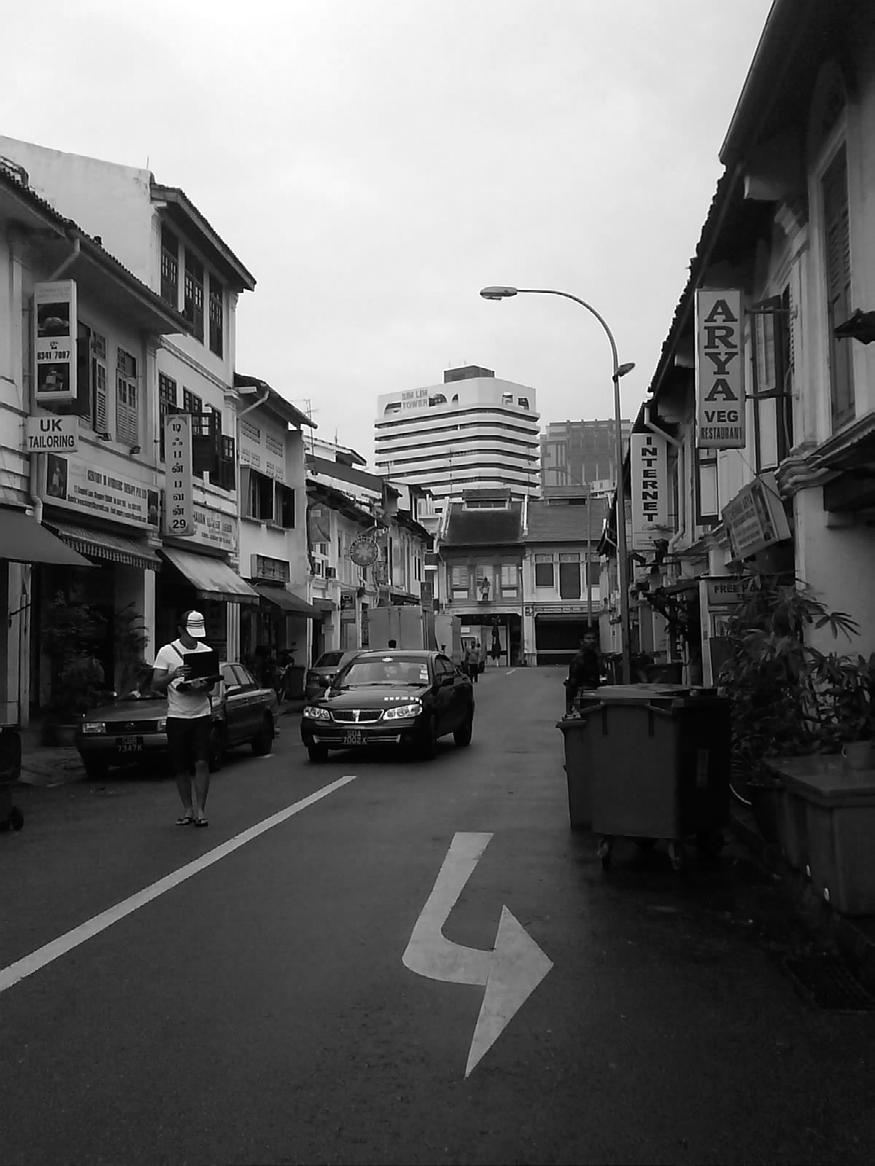
109 One-lane road, Little India Singapore
110
Flatness’s speed. Six-lane highway, to Al Qusais Dubai


111
Flatness’s speed. Three-lane highway, East Coast Park Expressway, Singapore
112 Layered city - interchange near Jebel Ali Dubai


113 Toa Payoh Interchange - Central Expressway & Pan-Island Expressway crosslink Singapore
114 100m overhead bridge : Metro station along Sheikh Zayed Road
115


DUBAI/SINGAPORE
CHAPTER 2
THE CITY IN ITSELF
DUBAI, SINGAPORE AND THE WORLD, LINEAR CITIES ARE ALMOST ALL RIGHT; A FANTASYLAND OF NEEDLES AND SHEDS
120
121
122
123
124
125
126
127 Port size
128
129
130
131
132
133
134
135
Beirut, Lebanon, 85 sq km
Dubai, UAE, 4114 sq km
136
137 The World 27 sq km Palm Jumeirah 34 sq km Palm Jebel Ali 38 sq km Beirut 85 sq km Palm Deira 186 sq km (as proposed) Total land area
Dubai: 1.5 million
Beirut: 1.3 million
138
Population
Population Density
139
Dubai: 408/sq km
Beirut: 15294/sq km
140
141
142
143
144
145


































146
1. Hong Kong 7 651
2. New York 5 766
3. San Paolo 5 644
4. Singapore
4 332
5. Seoul 2 875
982
21. Shanghai
442 World’s city ranking: High rise buildings count
43. Dubai
*Factors considered: Housing, transport, food, clothing, household goods, entertainment, rental & accommodation


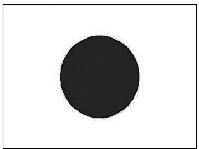

















































































147
1. Tokyo
143.7
2. Osaka
119.2
3. Moscow 115.4
4. Geneva 109.2
5. Hong Kong 108.7
10. Singapore 98.0
20. Dubai 90.1
World’s city ranking: Cost of Living (COL) index* (measured July 2009)
Port-au-Prince, Haiti, 171 sq km
Dubai, UAE, 4114 sq km
148







149
*Factors considered: Electricity, water availability, telephone, mail, public transport, traffic congestion, airport.
1. Singapore 109.1
2. Munich 106.5
3. Copenhagen 106.2
4. Tsukuba 105.5
5. Yokohama 105.1
35. Dubai 99.2
World’s city ranking: city infrasture
212. Port-au-Prince 33.1

150

151 A linear city in a city of cities
152 Sheik Zayed Road & adjacent typologies
153
154
155
156
157
city 2008: pancakes and tower blocks
158 New
159
Office rental prices: All prices listed are in UAE Dirhams per sq ft
160
161
Apartment rental prices
Apartment sale prices
Grandeur and monotony
Uniformity and identity


162
Multiplicity and individuality

163
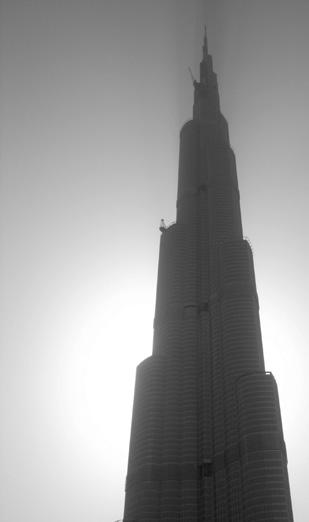

164
Duplicity and dialogue Singularity and height

165
Facade and materiality
Collisions of Forms and Typologies
Forms and typologies
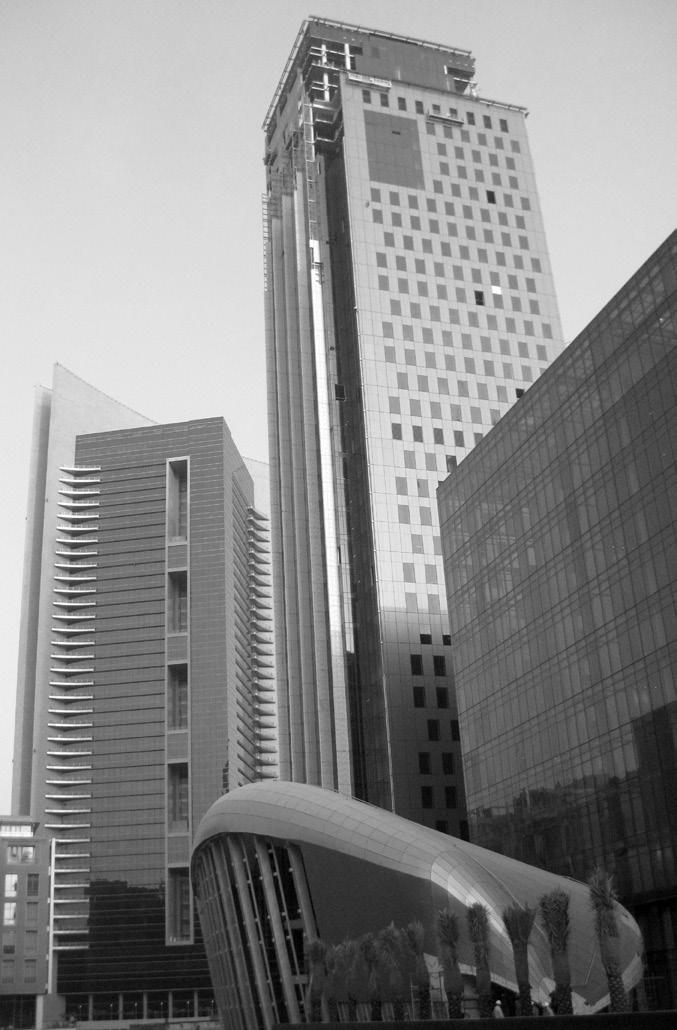
166

167 Accentuations

168
Mass and frame

169
Lightness and flight
Expansivity and usage Expansitivity and usage
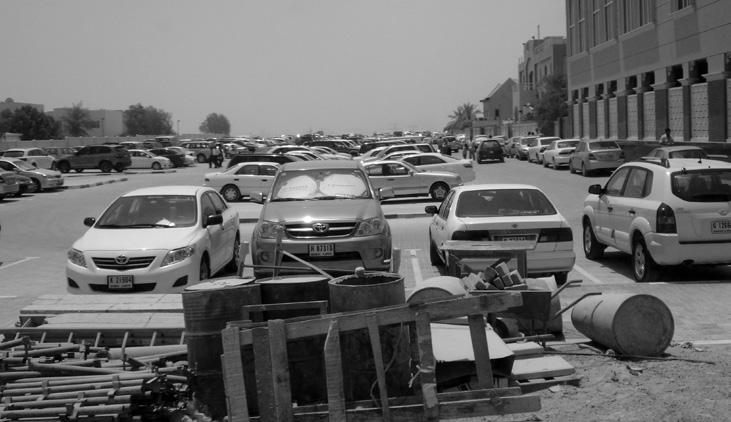

170


171
Constructions at play
Quantity. Sheik Zayed Road, Dubai
Quantity

172

173
Constructing new fantasy. Integrated Resort, Singapore

174

175 Constructing an ideal image of a city embracing water
176 Needles
177 Needles
178 Sheds: Shopping malls in Dubai
179
Big sheds
180
181 Sheds
Temperature 22°c
Temperature 35°c
182 Number of Malls in Dubai and Singapore

183

184

185
Autonomous interiors

186 Dubai Mall, 6th July 2009, 8pm

187
188 Playgrounds
189
Architectural features: Fountain, skyscape, aquarium and glister skies
190
191
192
193
194 Total number of international passenger traffic per annum for the world’s busiest airports
195 Relative distance from city center to airport
196 Connection of Emirates Airlines with other “hub” cities - World-centric
197
198 Connection of Singapore Airlinesv with other “hub” cities - Asia-centric
199
DUBAI
CHAPTER 3 : THE ATMOSPHERE OF THE NATURAL UNNATURAL
THE DEADLY DESERT, THE MANICURED LAWN, AND THE AIR-CONDITIONED NATION
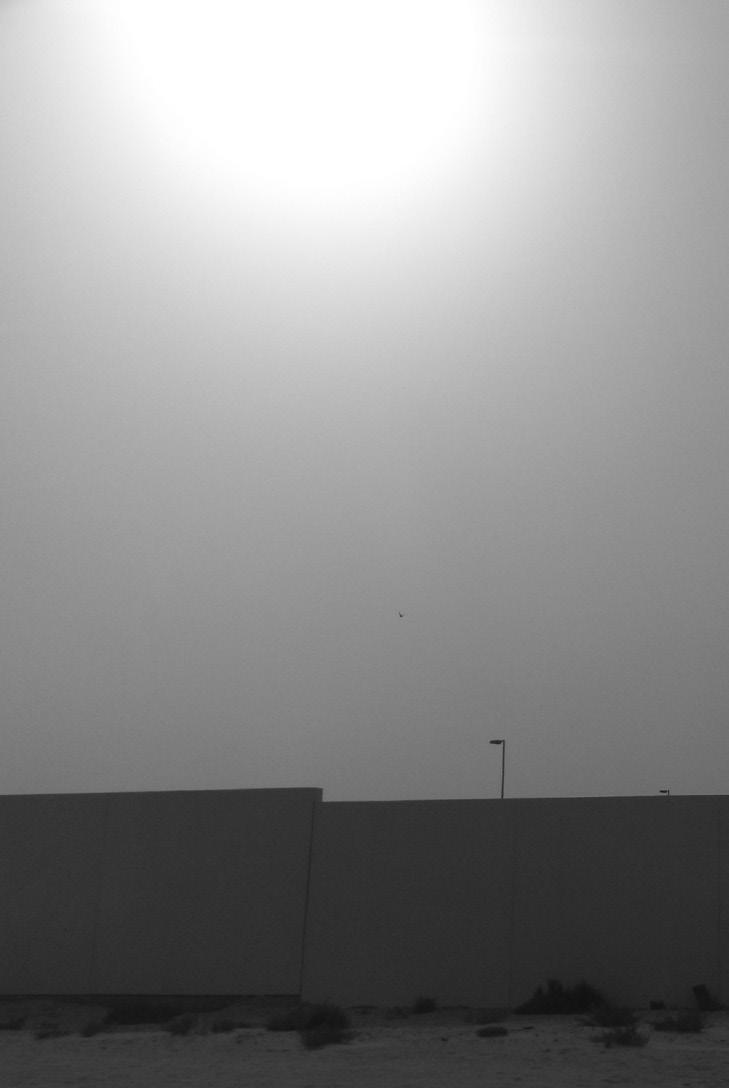
202

203
in the
City
desert
204
41°C DAY Day

205

206
City
Silhouette

207
Blanket atmosphere
A city by the sea in a desert climate

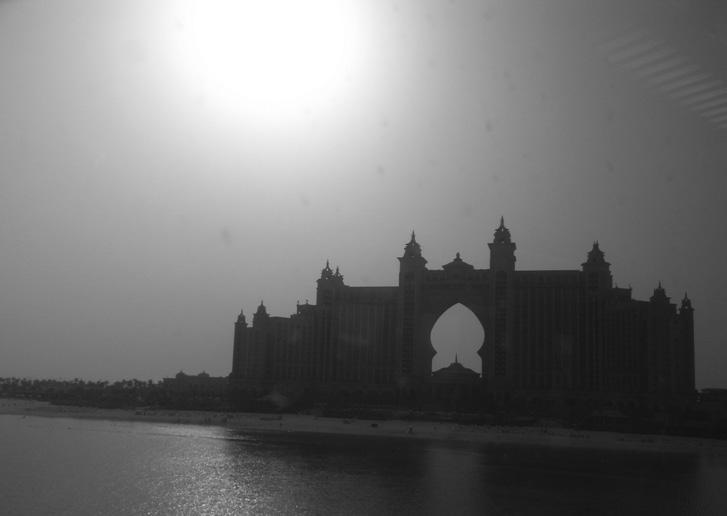
208

209

210

211
Heat
212 30°C Night 30°C Night 30°C Night

213
11°C difference between day and night

214
Nocturnal public

215

216

217

218


219 New Dubai

220 Sea

221
Desert
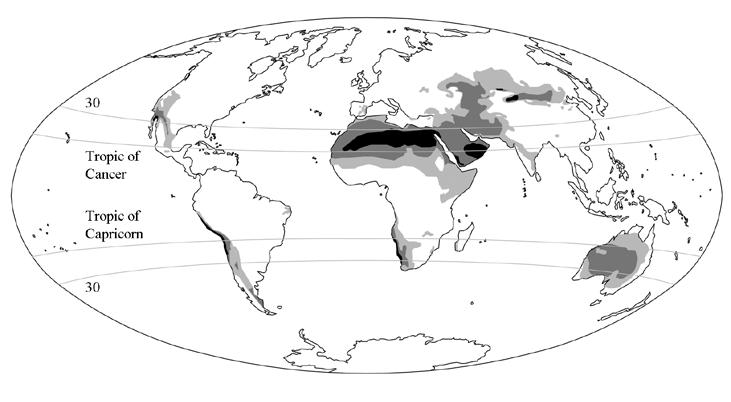

222 Deserts

223 Tropics

224 Dubai’s relational climates - coastal deserts

225
226 Singapore’s relational climates - coastal tropics
227
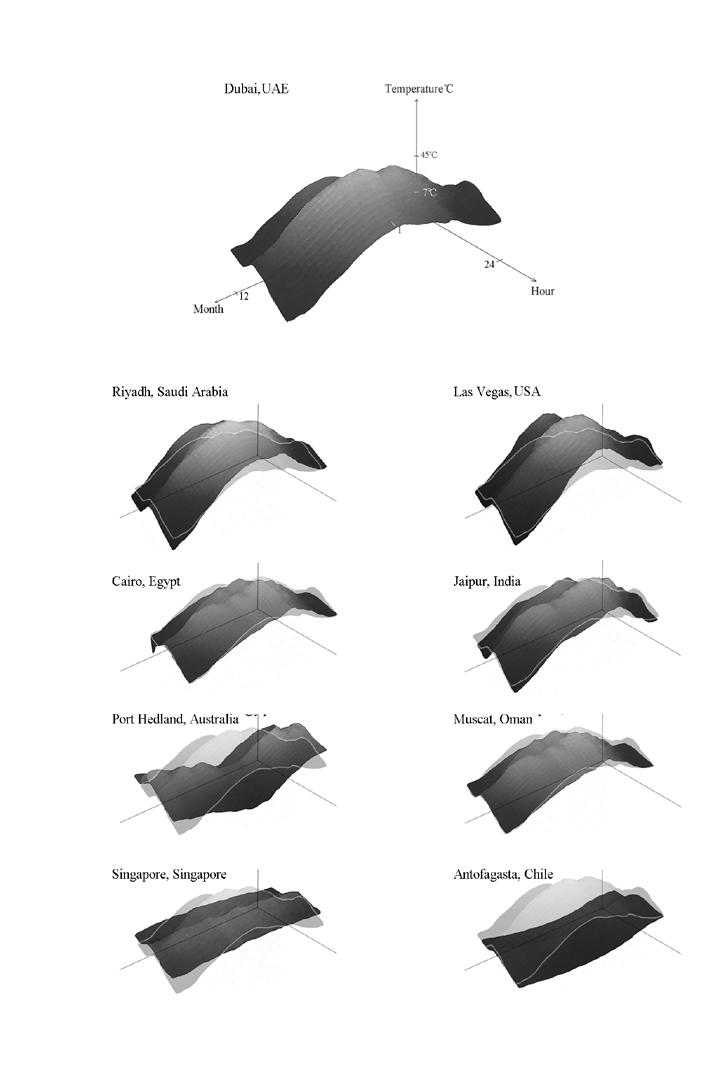
228 Temperature - a comparison between countries

229 Highest and lowest temperature recorded

230 N 1 5° 30° 45° 60° 75° 90° 1 05° 1 20° 1 35° 1 50° 1 65° 1 80° 1 95° 21 0° 225° 240° 255° 270° 285° 300° 31 5° 330° 345° 1 0° 20° 30° 40° 50° 60° 70° 80° 8 9 1 0 1 1 1 2 1 3 1 4 1 5 1 6 1 7 1 st Jan 1 st Feb 1 st Mar 1 st Apr 1 st May 1 st Jun 1 st Jul 1 st Aug 1 st Sep 1 st Oc t 1 st Nov 1 st Dec Dubai’s sunpath

231 Singapore’s sunpath

232 Rainfall

233 The burden of progress - a comparative of ecological footprint
234 Dubai area of green: 3.7%
235
Singapore area of green: 44%
Singapore Area of Green: 44%
236
237

238 Dubai’s mechanical rain

239 Forced coexistance

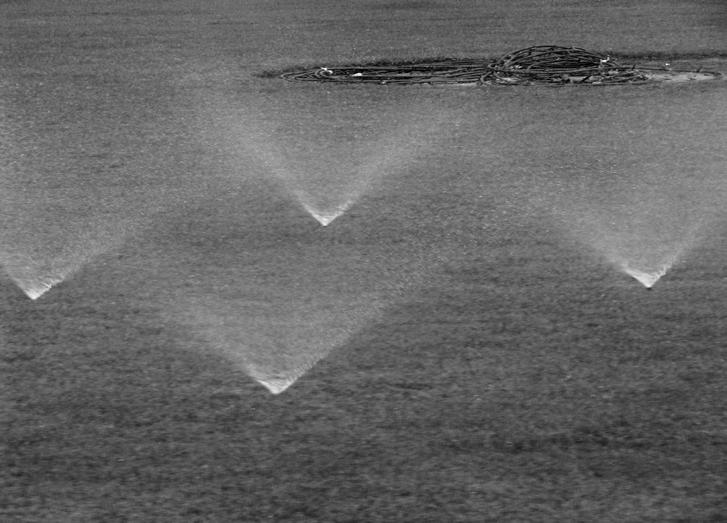
240 Struggle VS Priviledged


241


242 Dubai: Oasis city


243

244 Manicured lawns

245 Naturally manicured

246 Dubai’s Water Irrigation

247 Cost of desalination

248 Dubai’s water consumption

249
250 Dubai’s ground water extraction (per annum)
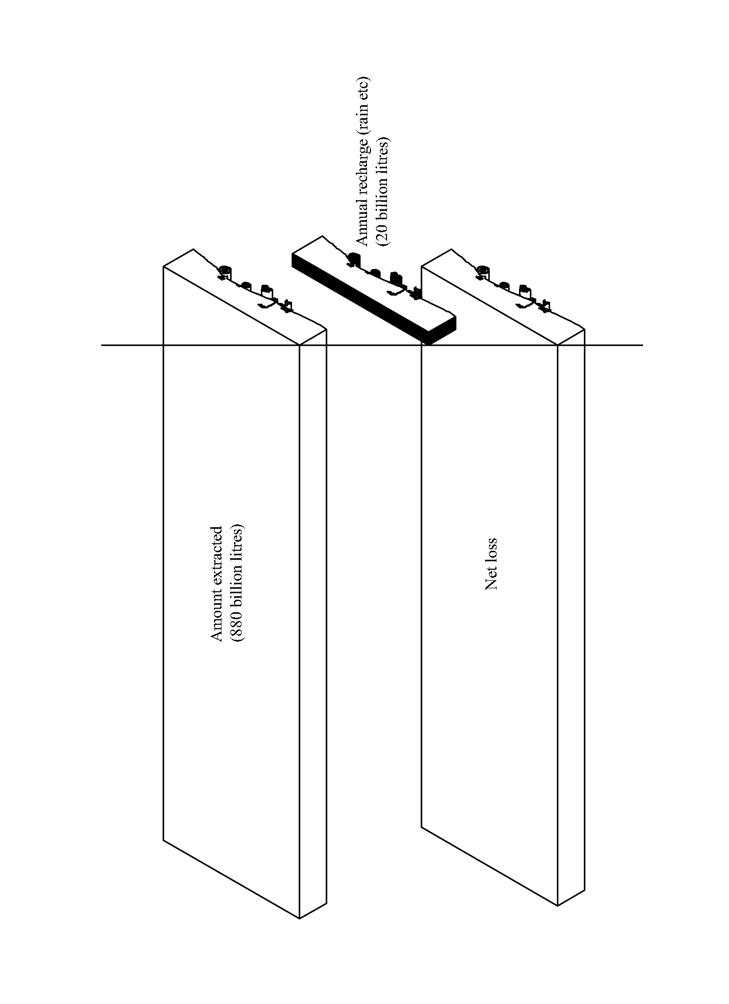
Dubai’s water desalination (per annum)

251

252 Taming Singapore’s ‘jungle’

253
254 Singapore’s water resource from 4 ‘Taps’ (per annum)
255 Singapore’s water consumption (per annum)

256 Dubai’s electrical consumption







257 Singapore’s electrical consumption

258 100 0 20 40
Consumption
HVAC
200
required to reduce outdoor temperature of Ski Dubai to -1°C
required to maintain temperature of Ski Dubai = 1/4 of power produced by a power station. Energy consumption (HVAC)
Ski Dubai Energy
for
(MW)
Power
Power
Outdoor air temperature (°C)
Indoor air temperature (°C)

259
Burj Dubai
Emirates Towers
Volume of buildings (Sheikh Zayad Road)

260 Outdoor Day - outdoor night Indoor
Temperature recorded
Skating rink - Ski Dubai







261
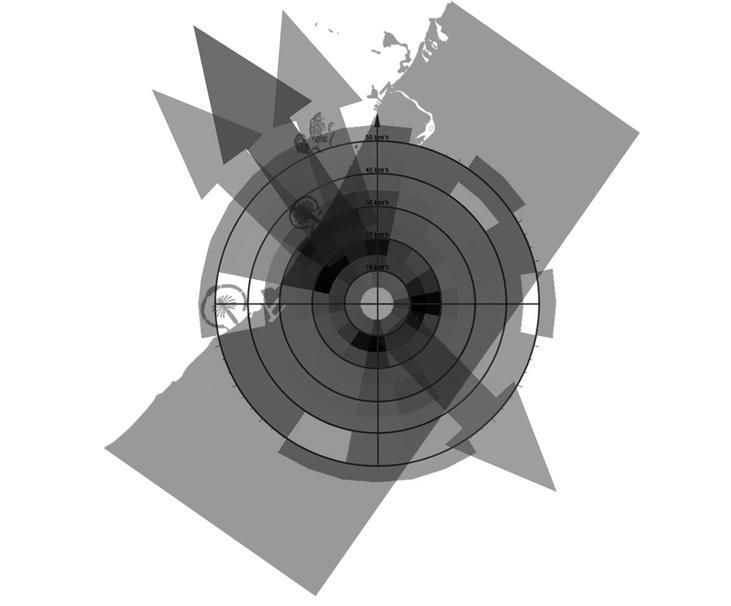

262
windrose
Monthly
diagram Windrose diagram (combined)
Windrose diagram (combined)
263
Monthly windrose diagram
Dubai’s sandstorm images (showing direction of travel)

264
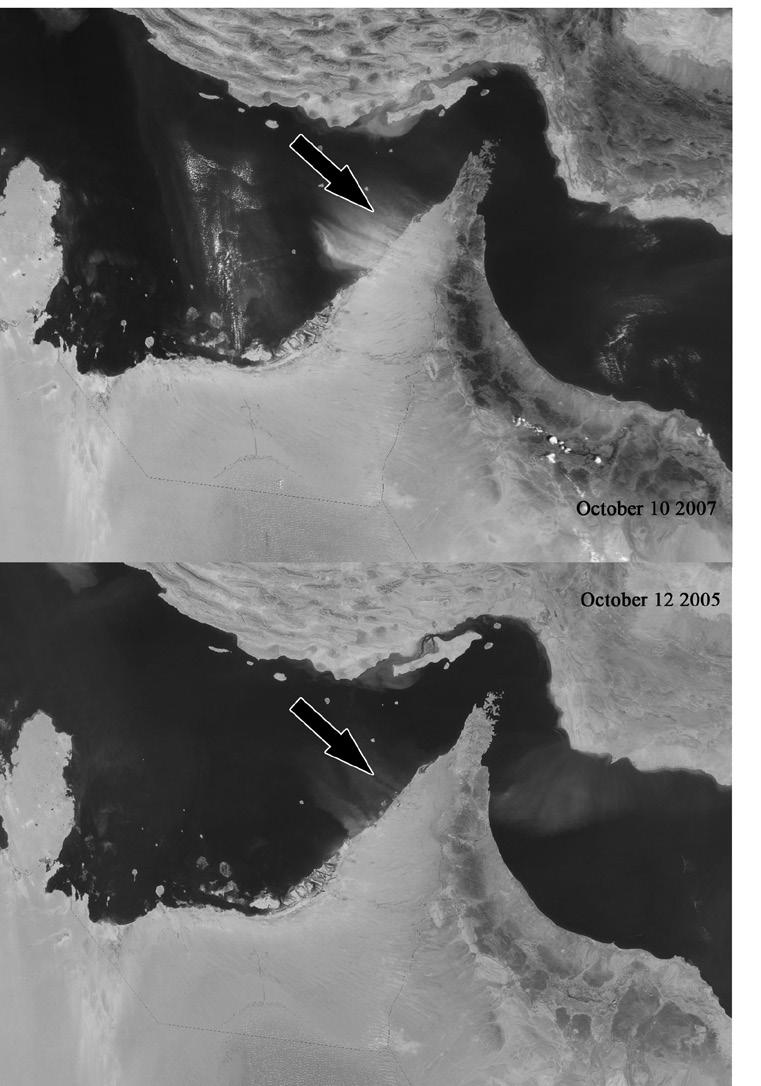
265

266 The desert menace

267 Gardens and beauty
Singapore’s haze images (showing direction of travel)

268

269

270 Carbon dioxide emissions per capita (in metric tons)

271 Amount of waste produced
DUBAI/SINGAPORE
CHAPTER 4
THE OTHER CITY
UTOPIAN VISIONS BUILD ON THE LABOUR OF OTHERS


Khalid Bin Walid Street, Dubai
276 Proportion of workforce Dubai Singapore Rest of the World Dubai Singapore Rest of the world Foreigner Foreigner Foreigner

Gender ratio in Dubai


278
Gender ratio in Dubai
279 1965 1970 1980 1990 2000 2005 2008 2009 Legend = 50,000 male = 50,000 fenake
Gender ratio in Singapore


280
Gender ratio in Singapore
281 1965 1970 1980 1990 2000 2005 2008 2009 Legend = 50,000 male = 50,000 fenake
282 Population of Dubai 3,500,000 3,000,000 2,500,000 2,000,000 1,500,000 1,000,000 500,000 1975 1980 1985
283 1990 1995 2000 2005 2009
284 Population of Singapore 3,500,000 3,000,000 2,500,000 2,000,000 1,500,000 1,000,000 500,000 1975 1980 1985
285 1990 1995 2000 2005 2009
Political entities with embassies in UAE
Political entities with embassies in UAE but without UAE embassies in home country
286 Employment & salaries bt profession
Political entities with UAE embassies
Simple
Skilled
287 Managers 5% 9% 9% 8% 24% 11% 11% 8% 19% Professional assistants Clerks Sales & Sservices
Operation workers & drivers
operation
workers
Employment & Salaries by Profession Groups Employment and salaries by profession
Professionals Crafstsmen
288 Post Graduate Illiterate Literate Primary school Preparatory school Secondary school Diploma University Post Graduate Illiterate Literate Primary school Preparatory school Secondary school Diploma University Male: 921,880 Female: 274,277 Highest education qualification in Dubai
Other Diploma
Polytechnic
Upper Secondary
Secondary
No Qualification
Other Diploma
Polytechnic
Upper Secondary
University
Secondary
Primary
Lower Secondary
No Qualification
Male: 1,117,804
Primary
Lower Secondary
Female: 1,159,597
289 Highest education qualification in Singapore
University
Pakistan: 16%

Arab: 11%
Bangladesh: 9%
Others: 7%
The Phillipines: 3%
Sri Lanka: 2%
Europe: 0.9%
The United States of America: 0.1%
India: 51%
290
Nationalities of Resident Population in Dubai





291 81.7% 9.4% 5.0% 1.9% 1.0% 1.0%
Singapore
Resident population by country of birth,


292 An Indian Dispora?
51%
10%
Indians
Emiratis
华 人
293
elayu
A Chinese Dispora?
M
13.9%
76.8%
Other Nationalities
55% Indian Expatriates
(Overall workforce)
Others
Arabs
Bangladeshi
Pakistanis
(Private sector)
Indians
Source:Khaleej Times Online
Hospitality:2% Banking:20% Oil and Gas:50%
Percentage of Emirati employees in different sectors
Source:Finance Asia Online
Demographics of workforce
294
Demographics of workforce in Dubai
(Overall workforce)
Degree Polytechnic Diploma
Upper Secondary
No Formal/ Lower Primary
Primary
Lower Secondary
Secondary
Economically Active Residents Aged 15years < by Highest Qualification Attained
Total Workforce:33% Manufacturing:45% Construction:61%
Percentage of foreign employees in different sectors
Source:Ministry of Manpower & TWC2 website
Demographics of workforce
295 Demographics of workforce in Singapore
57%
43%
Males
Females
Countries where the architecture firms of Dubai’s skyscrapers are based























296 xx
Countries where the architecture firms of Dubai’s skyscrapers are based














297 xx
Countries where the architecture firms of Singapore’s skyscrapers are based






298
xx

299 xx
Mapping of Skyscrapers in Singapore to their original country
Appointments for Burj Dubai project in terms of country of origin
300 Architectural colonialism. Dubai skyscrapers 0.0 0.1 0.2 0.3 0.4 0.5 Belgium Germany HK Korea UK Australia UAE USA
Appointments for Burj Dubai project in terms of country of origin
301 Architectural colonialism: Singapore skyscrapers Architectural colonialism. Singapore 0.0 0.1 0.2 0.3 0.4 0.5 Korea Singapore Japan USA
302 Sample zone of Dubai metropolis
303
Upper class residential
Middle class residential
Prime commercial
Royal domain
Undeveloped desert
304 Striated urbanism
305 Territorial exclusivity
Affluent class
Middle class
Labour class
306 Location, location, location
Affluent residential development Commercial development
Middle class & old city development
Industrial and labour class development
307 Space is the best defense
308 Labour Camps
309
64,498
310
Jebel Ali: Infrastructural proximity: population
311
312 Al Quoz: Camp typology: population 84,107
313
314 Sonapour: population 241,594
315

316 Labour camp, Al Quoz industrial area

317
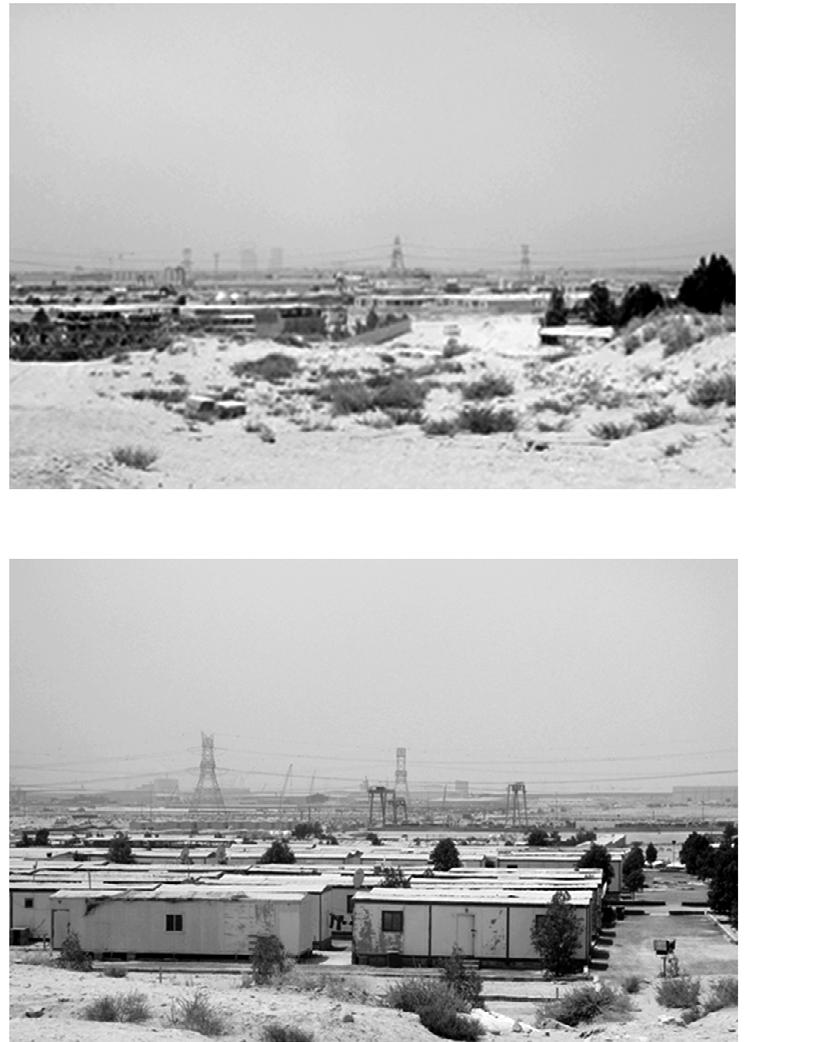
318 Jebel Ali container camps

319 Infrastructure

320 Jebel Ali: “Protection for their own good”

321
322 Boundaries of middle class residential domain
323
324 Al Satwa: population 37,531
325
326 International City: population 12,320
327
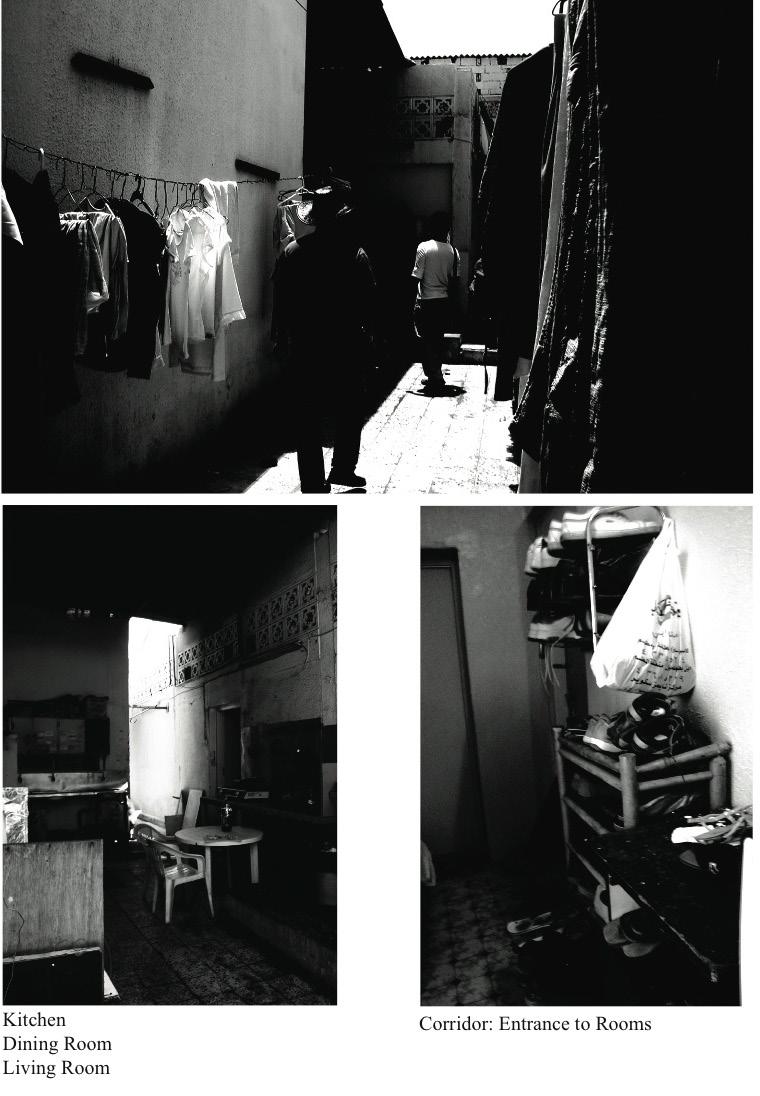
328 Service workers lodgings: Al Satwa

329
66.67 sqm/person
Emirates Hill Ground Floor
7 Bedroom Villa
6 People
330
331
Migrant
21
Al
5
30
0.68
4.78
Jebel Ali Labour Camp
Workers’ Lodgings
People
Satwa
Bedroom Villa
People
sqm/person
sqm/person
0.030 km Trains per 1000 people

0.2 Bus per 1000 people
3.32 Taxis per 1000 people
541 Cars per 1000 people
DUBAI
Comparison of Transportation
332 Comparison of transportation 308
of transportation
Comparison
0.025 km Trains per 1000 people
0.72 Bus per 1000 people
5 Taxis per 1000 people
111 Cars per 1000 people
333 SINGAPORE
1,287.4
1,333 Buses 300,000 passengers per day = 1.5 million passengers per day

 Dubai
Dubai
1.2
Land Area =
sq km
70 km Rail
million passengers per day
Comparison of Transportation Infrastructure & Usage
119 km Rail
1.4 million passengers per day
Singapore Land Area = 710.2 sq km
3,445 Buses

2.97 million passengers per day = 4.37 million passengers per day


336 Sports Car Sports Utility Vehicle (S$ 120,000) (S$ 107,600) (S$ 74,000) 1.65 litres Comparison of Car Prices & Fuel Cost Dubai = S$ 1 Luxury Sedan (S$ 30,000) Mid-Range Sedan Comparison of car prices and fuel cost DUBAI

337
Singapore 0.61 litres = S$ 1 (S$ 80,000) (S$ 170,000) (S$ 370,000) (S$ 370,000) Luxury
Mid-Range Sedan Sports
SINGAPORE
Sports Utility Vehicle
Sedan
Car

338

339



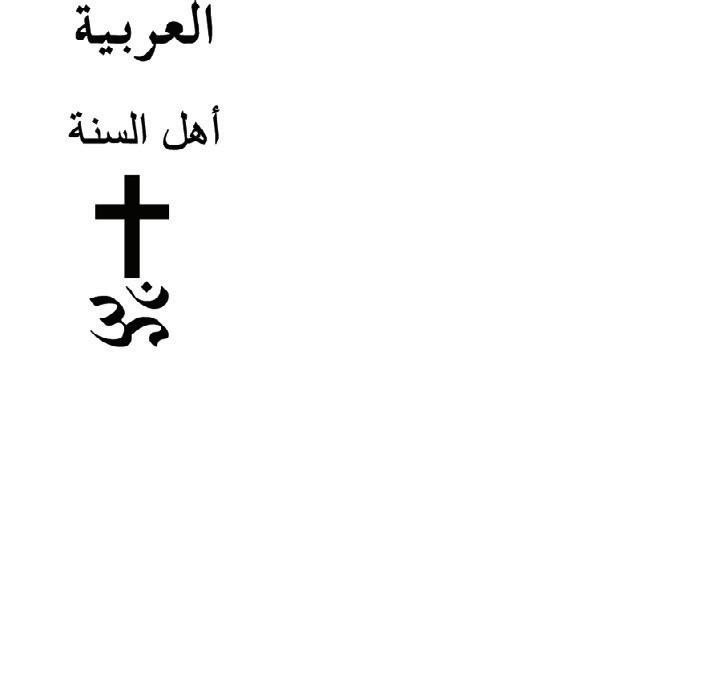

340 Religion in UAE Sunni Islam 80% Shia Islam 80% Christianity 80% Hinduism 80% Others 80%











341
Religious belief in Singapore In 1980s
342 Religious beliefs in Singapore, 1980
13.0% 3.6% 15.7% 30.0%
343 27.0%
0.5% 10.1%
Others
Religious belief in Singapore In 1990s
344 Religious beliefs in Singapore, 1990 14.1% 3.7% 15.3% 22.4%
345 31.2%
0.6% 12.1%
Others
Religious belief in Singapore In 2000
346
14.9% 14.6%
14.8%
8.5%
Religious beliefs in Singapore, 2000
347 42.5% Others 0.6% 4%






348 Religious beliefs
in Dubai due to immigration in the past decade











DUBAI/SINGAPORE
CHAPTER 5
THE OLD CITY TODAY AND TOMORROW
THIS CITY’S RELEVANT IRRELEVANCE
THE OLD
THE NEW AND THE NEW OLD

356
Old city, Dubai, 1968
Old city, Dubai 1822

357
Singapore river, 1836
Singapore river mouth, 1958
358
359 Old city, 2008
360
361
2009 Singapore River, 2009
Singapore River
362
Bur Dubai
Deira
The Creek
Old port
Bastakiya Quarters in the past
363
Section of wind tower
of courtyard house COURTYARD
of
Section of courtyard house
Plan
Plan
courtyard house
364
Little India district, Singapore
365 Shophouse
Plan of Chinese shophouse
Section of Chinese shophouse
Old city fabric
Urban blocks built in a clustered form
366


367


368

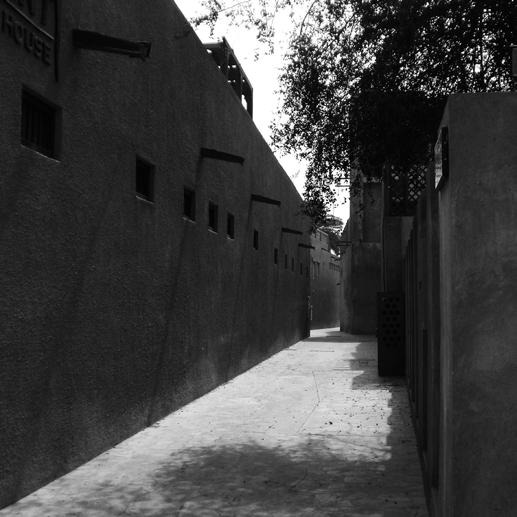
369


370


10371
372
Sample of old city
1km
Sample of old city @ Deira
373 1km
Sample of new city Sample of new city @ Al Wasl 12A St and 29th St
374 1 km
old Tiong Bahru apartments
375
Payoh New Town HDB Estate
km
Toa
1
376
1 km
Deira Gold Souk
377
Dubai Mall
1 km
378 1 km Dubai Mall in the old city
379
Old city in Dubai Mall
1 km
380
1 km
Deira Covered Souk
381
Mall of Emirates
1 km
382
1 km
Deira Spice Souk
383 World Trade Centre
1 km
384
1 km
Deira Perfume Souk
385 Emirates Towers
1 km
386
1 km
Deira Electronics Souk
387
Burj Al Arab
1 km
Cool alleyways within the souks that allow natural breezes in are now heated up by air-conditioning units.
Water ways within islands serve recreation and
no longer in use.
388 Old souk alley ways
Electronics souk
Covered souk
Spice souk
Gold souk
Shopping
Perfume souk
Madinat Jumeirah
Old souk alley ways
Dubai Mall
Old school courtyard no longer in use.
A rest stop amidst
The
A rest stop amidst a winding maze of shops.
Madinat Jumeirah
Old school courtyard
389
mall alley ways
Shopping
Madinat Jumeirah
Deira City Centre
Dubai Mall
Mall of Emirates
Shopping mall alley ways
Ibn Battuta Mall
unsheltered streets
390 Pedestrian circulation paths
souk
Pedestrian circulation paths
fish market

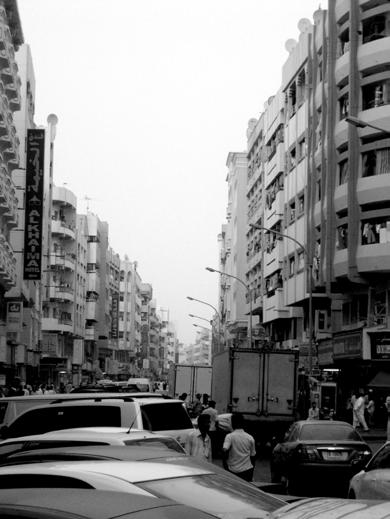
391 Mass customization
Congestion - man and machine


Back to old school
Empty history


394
Ghost town


395 Occupied Informal piazza


Early sheds
DUBAI/SINGAPORE
CHAPTER 6
THE FLOOD IN THE DESERT
FUTURE PROJECTION
This chapter is about the “what if-s” that could intensify the urban phenomenon that is Dubai. In this exercise, we hope to further our insights into the ever-changing nature of urban design.
We have posited a fictional future Dubai where global warming raised sea levels by 15 metres and median temperature by 20°C.
Much of Dubai’s built-up areas are now partially submerged underwater. Dubai becomes a mega-scale imitation of its own “The World”. The city exists as discrete objects in the Gulf, island communities surrounded by massive concrete seawalls connected only by waterways and bridges. Total segregation of demographics and activities is now achievable.
Within these islands, urban forms are exaggerated, pressurized by the need to maintain the face of a prosperous and growing city. The scale of architecture becomes overwhelmingly enormous at the level of interiority; all varieties of artificially created ecosystems are able to exist within a single climatically-controlled shed.
Constrained by lack of building area, constructions have grown in both height and depth; both the sky and the subterranean become new living spaces in the human experience.
Dubai is thus transformed into the city of our imagined future: hyper-congested, efficiently enclosed and absolutely artificial.
400
Dubai, UAE
30 July 2159, 0700hrs
Good morning Dubai!
You’re tuned into The World, Dubai’s first and only morning newsflash segment.
It is the 30th of July in the glorious year of 2159.
Today’s weather will be partly cloudy, with slight breezes from the north-east. Temperatures will peak at 71°C around midday and drop to 49°C at night, a record low of this year ’s summer. Business bay is in its winter phase this week and you will be greeted by 5 inches of snow between 1pm and 3pm.
Waves on the outer Palms will reach a height of 26 metres, so don’t count on going out for a yacht cruise today. For those living on the inner islands there will be showers in the late afternoon. Please stay indoors to prevent getting acid burns.
Sandstorm Caasi will return to run her course through the old city. The local sand-boarding association has issued a warning to all sand-boarders to stay safe underground, and not attempt any routines or practices today.
On to happier news, construction of the world’s tallest freestanding structure, The Grand Shishah, will begin today. The Grand Shishah, a much anticipated investment of His Highness Sheikh Khafar Zulu Al Maktoum, will be set to smile down on us at a height of over 2 kilometres.
Repair works on the seawall surrounding Sheikh Zayed Island are still ongoing after the infamous outerislands riot a week ago. Transportation travellators and sky ports, however, have resumed normal operations.
Water prices are set to rise again, as the hydro index leaped from 55.6% to 60.1% over the weekend. The Energy index rose 3% due to high output from the newly opened Al Raq wind farm.
In other news, new attractions at the Mall of the Emirates have just arrived this summer in celebration of their 150-year anniversary! They include The Mangrove Tour, and The Tropical Jungle Treetop-walk. Also just in: the Felis cactus from the icy wastes of Australia, courtesy of Dubai Botany. The Filipino quarter in the mall is also having their annual bazaar so be sure to stop by the 5000 stall extravaganza for some feisty deals!
A team comprising archaeological experts and conservationists has almost completely restored the remains of the mystical Atlantis Hotel after the Tsunami of 2059. Early records show the presence of a water theme park that used hundreds of gallons of fresh water a day, purely for leisure sliding.
Tomorrow marks the centennial anniversary of The Wall’s construction. All 60 sky-bridges around the Burj Dubai will once again be packed with festival-goers and decorated floats. Most of the freeways and canals in the Downtown area will be closed at 6pm to midnight for the parade.
In four days, the Satwa Rangers and Karama Konquerors will face off in a dune-bashing extravaganza in the Deira Inner Creek Circuit. This final battle of skills will decide the champion, whose colours will adorn the old city for a year. It is not to be missed! Support your favourite team by booking one of the private wind tower box-seats before tickets run out!
We’ve come to the end of our segment. This is Amir Mirza signing off. We, here at The World news channel, hope you will join us again tomorrow. Thank you and have a good day.
401

402 Hydrological Equilibrium - Singapore 2050

403 Deliberate Constraint - Dubai 2050
404
405





410

411




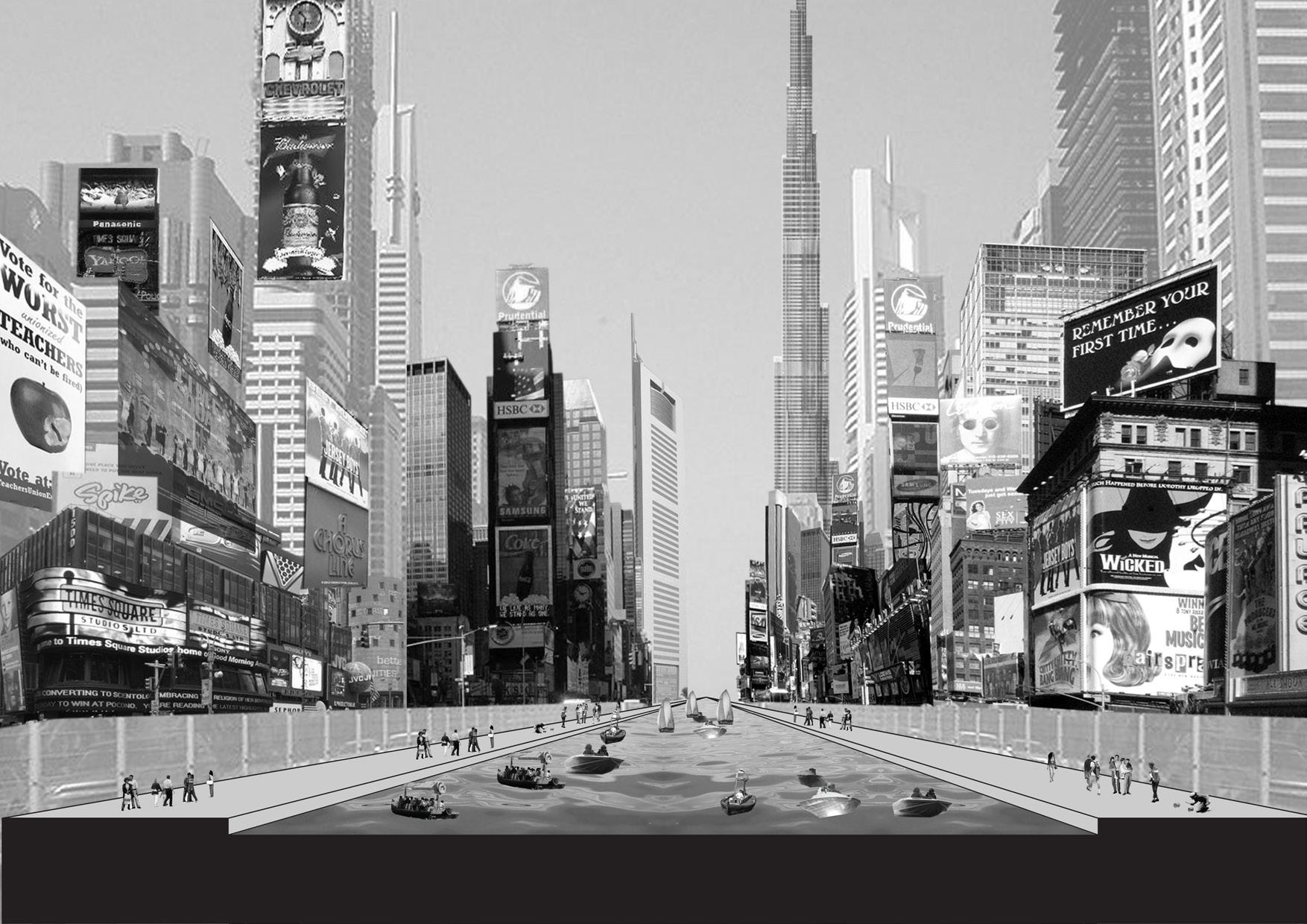

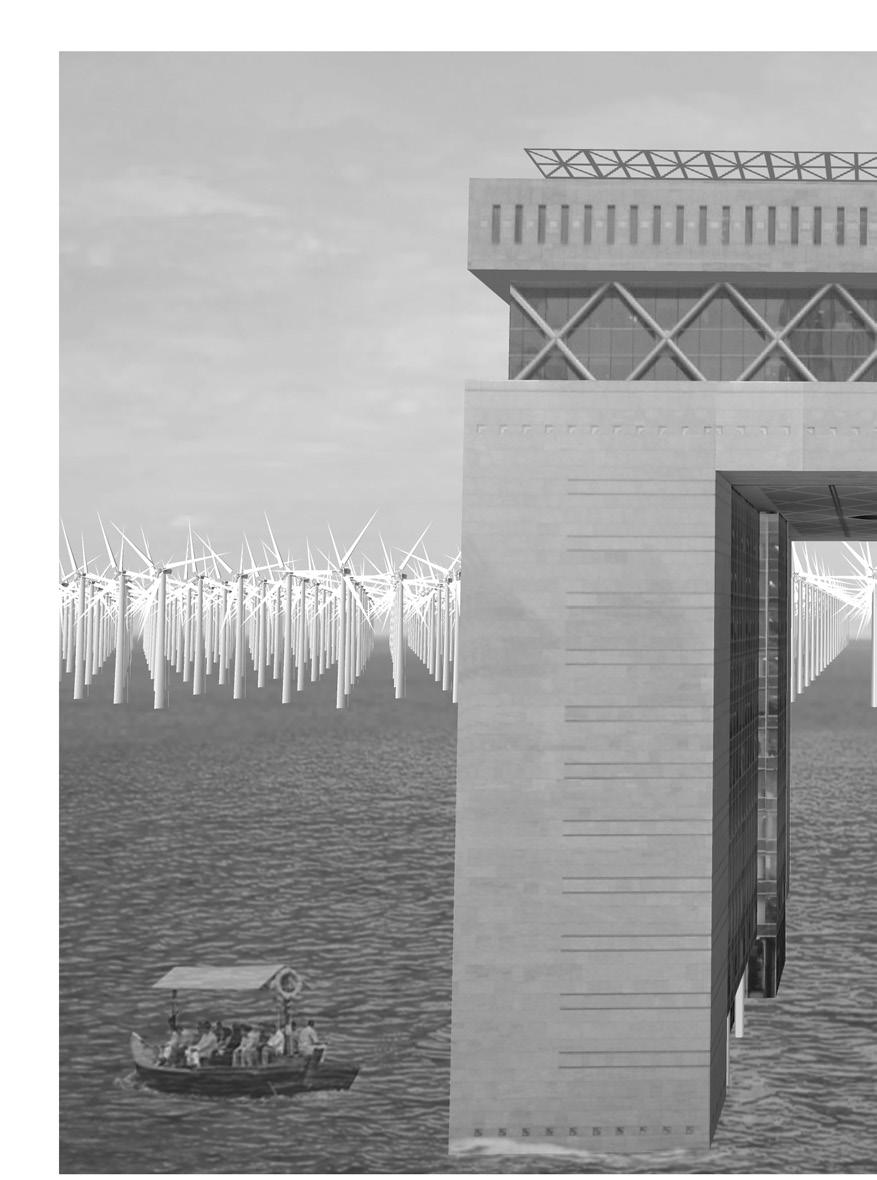
418

419


Island communities


Under the tiled sun






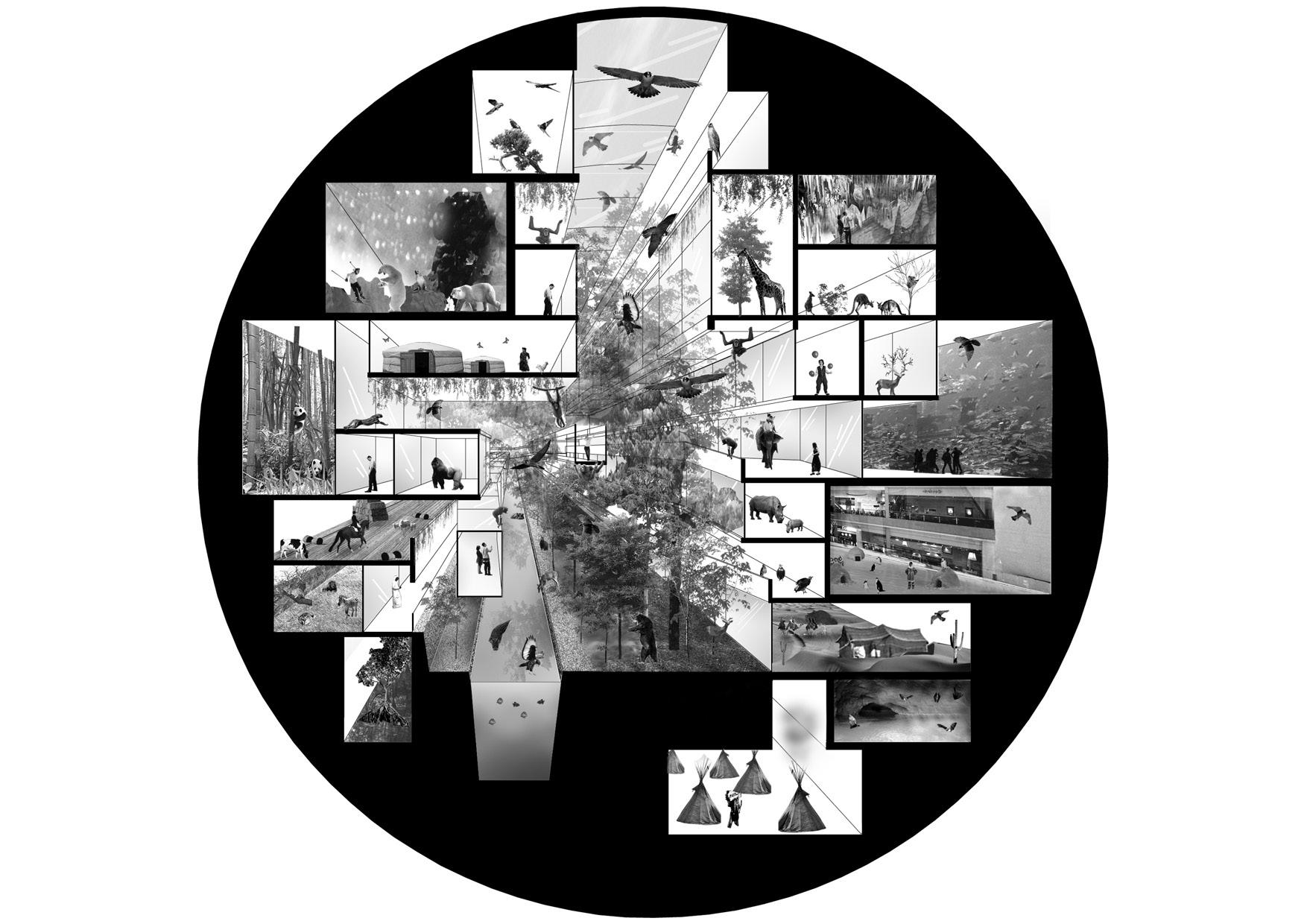
Mall of the earth




432

433
DUBAI/SINGAPORE
CHAPTER 7
THE UNIVERSAL URBAN CODE
THE OPTIMUM CITY MODEL
Codes, regulations and guidelines
1. A universal design template does not exist. The architecture of every city should be a unique response to its climate, culture, people and economy. A building’s aesthetic is a derivation of the poetic combination of design, relevance to context, craft of materials and elusive connection to its users. It is not a mere visual and tangible element.
The city
2. Large cities with concentric centers. High density characterizes centers, with progressively lower-density developments radiating out to the periphery. Distance between centers is less than an hour’s drive.
3. Regulate the territory of the city in proportion to its population to prevent suburban sprawl. Compacting the city to cut down auto-mobility and encourage walking.
4. Narrow vehicular road widths with more intersections to slow vehicular traffic and encourage walking; a maximum road width of 2 lanes for one-way roads, 4 lanes for two-way roads within centers.
5. Every city has a Strip, the culmination of all the city center has to offer – the star attraction marked by skyscrapers flanking highways.
6. Obtain at least 80% occupancy rate before commencing construction of buildings.
7. Attain pedestrian traffic equilibrium with mixed-use district planning; self-sustaining communities in the day and night.
8. Residential areas are less than 30 minutes’ walk from city centers.
9. Encourage street life and interaction between pedestrians: a minimum pedestrian path of 2 meter width, inclusion of street furniture.
10. Continuity on street level; opening up of ground level of buildings to public access – barrier-free separation of the street from interior.
11. Multi-storey basement car parks as concealed urban space-savers 2 minutes from residences.
12. Infrastructural design maximizes access to public transport and encourages public transit ridership: locating train and bus stations at or close to centers, looped and comprehensive transit routes that enables convenient access, creating conducive sheltered environments for walking to and waiting for public transport.
13. Clustering complementary businesses into hubs to create cost-effective critical masses served by public transit.
14. Market rationalization as the disciplinary hand: implementation of road toll system and tax to reduce traffic congestion in centers.
15. Proliferation of the Great Green Buffer, along road dividers and pedestrian paths, to reduce noise and air pollution.
16. Ever-changing coastlines are the norm. Battle for claim to underwater topography.
17. Land reclamation as land-art – war of aesthetics (and property) over environment. Consideration of the environment should still play a major part in the design process e.g. studies on the marine ecosystem should be conducted before approval of land reclamation.
436
18. Land is not fixed. The extent of construction possible today means that a totally artificial environment can be created on the scale of the city despite financial and environmental costs of maintenance. Governments must balance their resources in order to obtain a sustainable solution.
19. Functionality trumps iconography. Use becomes the central concern of design projects; the ‘wow’ factor is short-lived.
20. Man On The Street dictates urban perspective and planning. Dethrone Google Earth.
21. The virtual is becoming increasingly connected with the real. Studies of the virtual world, and its representations in the urban fabric, should be made in order to understand its implications. A new science –Virtual Architecture, has emerged.
22. Architecture designed by any foreign firms should still reflect an understanding of the local culture and identity. Forced transplantation of urban and architectural models often fails in foreign landscapes.
23. Big is not always beautiful (or impressive after some time). Scale is a reflection of function, needs and user capacity. Buildings of extreme scale should allow for alternative reuse to prolong its lifespan.
24. Comfortable and adequate resting areas for shoppers should be integral parts of megamalls. Complimentary entertainment should also be part of the shopping experience.
25. Multiplicity, the cure to banality. Create variety in urban routes, being too regular in urban planning and building typology deadens streetlife.
Environment
26. Buildings should negotiate existing, natural topography and landscape features instead of leveling and building on a blank parchment.
27. The design of the façade should speak of its surrounding climate while providing comfort to end-users.
28. Only indigenous or low maintenance flora and fauna are allowed for public landscaping.
29. Extensive, lush green gardens are a luxury only realistic (in environmental costs) in the right climates.
30. Water should be recycled ala NeWater for irrigation instead of using water from the more expensive and destructive (by discharging the toxic by-products) desalination.
31. Massing and size of buildings to be limited, capped at a value based on correlation with the amount of energy required for cooling as well as amount of materials allowed.
32. A set limit on energy consumption of building calculated per cubic volume. A set percentage of energy production from clean renewable sources.
33. A set limit to the amount of raw materials allowed for construction, amount proportional to the percentage of materials recyclable.
34. Designated parks or recreational zones at specific locations, tapping on neighboring tall buildings for solar shading.
437
35. Migrant workers’ lodgings should be a consideration included in the process of reviewing master and urban plans.
36. Lodgings should not be segregated from existing urban fabric. It should be allowed to grow organically within a designated area and in so doing enhance the character of the place.
37. Lodgings for migrant workers should be within 500m radius (walking distance) of construction site whenever possible.
38. Develop an appropriate system of housing migrant workers based on the city’s individual characteristics (land availability, transport network, resource allocation, climate etc.); said housing system should be easily constructed and versatile.
39. This system of housing should be approved by law and standardized. This will promote safe and humane living conditions for migrant workers and reduce the occurrence of unhygienic urban slum conditions.
40. There should be ample public spaces for loitering and gathering. This will improve street security (Jane Jacobs’ “eyes on the street” theory) and create space for spontaneous activities to occur.
41. The public spaces should have versatile street furniture, serving multiple purposes. These spaces can help to mitigate the usual and relatively small sleeping quarters of the migrant workers.
42. Encourage transparency and subsequent accountability in preventing the degeneration and deterioration of living conditions by not concealing lodgings.
43. Dormitories should have sheltered vehicular pick-up points within its compound.
44. Each living space should adhere to the standard ventilation guideline of 15CFM per person. There should be sufficient air openings for natural ventilation.
45. Each living space should adhere to the minimum floor space requirements of the particular country (approx 4sqm) to prevent congestion and unhygienic living conditions.
46. Water and sanitary services should adhere to the standard health regulations of the particular country.
47. In the event where lodgings are too far from public amenities and shops, they should be constructed as a mixed-use development to provide the necessary amenities and enhance the convenience of residents.
48. Lodgings should be located within accessible and comfortable distance from the main transportation network of the particular country. This will promote a more integrated social fabric.
49. At least15% of the Gross Floor Area within dormitory accommodations should be zoned for recreational purposes.
50. Permanent dormitories should not be constructed within heavy industrial zones.
51. Residential community should be informed at the planning stage, should dormitories be constructed within a residential zone.
52. A local market structure should be provided for residents and foreign workers to sell and exchange local and foreign goods.
438 Labor
Conservation
53. Conservation as an instrument of state-craft, important to the collective memory and national identity. Successful implementation is dependent on efficient enforcement and cooperation from relevant authorities.
54. Mass customization of conservation schemes. Drawing up specific conservation guidelines targeted at specific sites, for architecture relating to the larger urban fabric, rather than a general manual targeted at architectural typologies.
55. Gazetting of old areas should be assessed and revised every 10 years.
56. Old estates are scheduled for maintenance by the state every 3 years.
57. Complete reconstruction is not allowed. Retain or restore heritage areas from existing plots.
58. Power to the people: proposals to demolish old estates or buildings are announced, followed by a period for citizens to vote and/or campaign for or against the proposals. The people on the ground decide what is and will be visually significant in the urban landscape.
59. Adaptive reuse as the catalyst for change. Needs of new uses moulded around existing structures.
60. Reduce rental costs to encourage reuse of historical buildings on a competitive scale comparative to that of new buildings.
61. Cultural and social continuity become the drivers of conservation. Gentrification or theme-parking of conservation sites should not be allowed to swallow phenomenological aspects.
62. Retain local culture and memories by allowing existing trade and residents to occupy all if not parts of conservation sites instead of forced expulsion and full displacement.
63. Encourage residents of older estates with incentives to maintain their living environment. This prevents rapid decay of old areas and outflow of occupants that inevitably leads to the demolition of these old areas.
64. Retain integrity of climate responsive features of vernacular architecture. E.g., Jali windows on all facades should be left unhindered for ventilation and shading instead of being enclosed with glass in favor of modern air-conditioning.
65. Symbiotic dependency on the old. Sensitively consider the alterations to micro-climates caused by the existence and environmental output of new buildings adjacent to conservation sites.
66. Include the use of at least one vernacular material in the design of new buildings.
67. Nurture landscaping in normally neglected back lanes of low-rise buildings, usually found in older estates, to become points of interest for pedestrians.
68. New technological features must be integrated into an existing building as a critique and improvement to existing passive environmental designs.
69. Urban skyscrapers should have two or more layers of porous shading devices on its façade inspired by vernacular ventilation strategies instead of modern glazed surfaces.
70. Set up a legitimate society, consisting of both authority and grassroots, to broaden public understanding of heritage and cultural identity in the country and move conservation projects beyond visual manifestation.
71. Active promotion and inclusion of conservation areas in commemorative books and memorabilia. Their content should reflect the different layers of history and broadcast the intangible value of memories.
439
Extensive documentation will enable an international and regional creative platform to share and learn from similar experiences.
Cryptic points
1. Deliberate adaptation and filtration of any design solution are keys to design evolution.
2. Technology should not act as a form of separation between interior function and exterior function.
3. Carving gated communities out of the urban fabric will create segregation within a city.
4. The fabrication of “capitalism trophies”- new forms of architecture, will lead to advertisement of a city as an image of achievement. What if capitalism system fails? Those trophies will become “monuments” which represents the failure of previous success? Focusing less on economic development in state policies would not result in the diversification of architectural forms – creation of capitalism monuments.
5. Water has always been celebrated both naturally and artificially. Water elements incorporated into urban planning can be a form of problem and solution in the necessity of humanity needs.
6. Gauge which is more sustainable in the long run – planting trees for shade or constructing shelters.
7. Money spent on desalination for irrigation should not exceed money spent on desalination for human consumption.
440 72.
Model:
1. Nationalism has been replaced by Urbanism. Cities fighting one another for investment capital, tourists dollars, intellectual input, talent, livability. This is the new site of experimentation of innovation, development and aggression. The city is also filled with exploitation, abuse, and environmental degradation an underside of its glistening image. And now more than 50 percent of the world’s population live in urban development’s growing every day in every continent in every nation. Singapore and Dubai are, for better or worse models of both nationalism and urbanism influencing the development of cities the world over. Taken from research on both cities; a universal design template tells a story of a future urbanism as a product of the best practices (and warnings) from both city states to imagine a universal code.
2. Cities are great. Large cities with density, congestion, and compression are better. The wide open spaces can be left for the desert, jungle, or the forest.
3. The automobile, despite Le Corbusiers vision kills the city. Eliminate it. Electoronic Road Pricing (ERP) helps. Subways are pretty good. Closely packed cities where one walks to work, walks to buy groceries, walks to school is even better.
4. Embrace congestion, messiness, and chaos. We all have our mobile phone to navigate the confusion.
5. GPS, Google Maps, and real time information allow for density without inefficiency. The information network is much larger and yet much smaller spatially then the antiquated automobile network. Its also cheaper to upgrade.
6. A strip is always pleasurable…long, slow, and sexy. You need both the street walker and the auto cruiser. Sheik Zayad Road has neither. Orchard Road has only one. Its ok to have a few cars, a convertible prius gives both the glam and the penance.
7. Real Estate and Architecture are mutually exclusive. Collin Rowe asserts a skyscraper is not architectural. Don’t forget it. It’s the street and interiors that count.
8. In climates of maximum air conditioning the interior is the best defense against boredom and sweat. Celebrate it. Robert Venturi’s Big Sheds and Big Signs forget the important parts: It’s the interior organs that matter. No one cares about the signs or the sheds anyway.
9. The night is as important as the day. Le Corbusier only was half right “Architecture is the beautiful play of form in (Sun) Light.” Architecture and the city is also the beautiful play of form in darkness and artificial illumination. The nightlife is always more intriguing than the day life anyway.
10. Tony Garnier separated functions of the city over 100 years ago. We have been struggling with the decapitation ever since. The more mixes the better. Yet shopping and residential alone is not a mix anymore. Mix all of the city together and stop with the master planning color coding. It’s the death of any city’s life.
11. The Great Green Buffer is great for the jungle. Singapore has many. It cuts down noise and pollution and heat. Lee Kwan Yew knew this 40 years ago. But please stop with the lawns and the army of roving cutters. America’s fascination with green doesn’t work in the Jungle. Celebrate what you have.
12. Dubai needs to celebrate that it doesn’t have anything naturally green. Please, stop with the watering – drinking is more important. Let the imported trees from Singapore, India, and China die. Dubai needs to embrace its environmental inheritance—this will always spur innovation and it’s much cheaper. We like the desert anyway.
13. Ever-changing coastlines are the norm. And its about to get significantly worse. Mobile coastlines and mobile architecture are in order. We need to be thinking about modernism’s inspiration: The cruise ship: the best defense against rising seas is to float.
441
Bibliography & Sources
Chapter 1
Rem Koolhaas, Ole Bourman, Mark Wigley, Volume 12: Al Manakh, Columbia University GSAPP / Archis (September 1, 2007)
Dirk Laubner, Dubai - An Aerial Tour Motivate, 1st edition (2007)
The World – Dubai, accessed on 28th June 2009 <http://articles.privateislandsonline.com/regional/the-world-dubai/3/ >
The Palm Deira, The Emirates Network: Ten Real Estate, accessed on 28th June 2009 <http:// realestate.theemiratesnetwork.com/developments/dubai/palm_deira.php>
The Palm Islands, accessed on 29th June 2009< http://www.thepalm.ae/>
Palm Jumeirah Dubai Beachfront Properties, accessed on 29th June 2009 <http://www.zimbio. com/United+Arab+Emirates/articles/169/Palm+J umeirah+Dubai+Beachfront+Properties>
Sir Thomas More Utopia¹ accessed on 3rd Aug 2009 <http://users.nsula.edu/sinclaird/utopia.jpg>
Chapter 2
Emirates, Emirates Route Map, accessed on 27th June 2009 <http://www.emirates.com/english/ flash/route_map.aspx> (pp 8-9).
Singapore Airlines, Global Route Map. accessed on 14th July 2009 <http://www.singaporeair. com/saa/en_UK/content/flights-fares/routemap/ GlobalRouteMap.jsp> (pp 10-11)
Wikipedia, List of countries by GDP (nominal) per capita. accessed on 29th July 2009, <http:// en.wikipedia.org/wiki/List_of_countries_by_ GDP_(nominal)_per_capita> (pp 43)
Wikipedia, List of countries by GDP (PPP) per capita. accessed on 29th July 2009, <http:// en.wikipedia.org/wiki/List_of_countries_by_ GDP_(PPP)_per_capita> (pp 43)
Wikipedia, Dubai, accessed pm 23rd June 2009 <http://en.wikipedia.org/wiki/Dubai>
Wikipedia, Dubai Metro, accessed on 20th July 2009 Dubai Metro < http://en.wikipedia.org/ wiki/Dubai_Metro>
Wikipedia, Hong Kong, accessed on 23rd June 2009 <http://en.wikipedia.org/wiki/Hong_kong>
Wikipedia, Mass Transit Railway (MTR), accessed on 20th July 2009 <http://en.wikipedia. org/wiki/MTR>
Wikipedia, Yokohama, accessed on 23rd June 2009 <http://en.wikipedia.org/wiki/Yokohama>
Wikipedia, Miami, accessed on 23rd June 2009 < http://en.wikipedia.org/wiki/Miami>
Wikipedia, Miami, accessed on 23rd June 2009 < http://en.wikipedia.org/wiki/Miami>
Wikipedia, World’s busiest airports by international passenger traffic, accessed on 25th June 2009 <http://en.wikipedia.org/wiki/ World%27s_ busiest_airports_by_international_passenger_traffic>
Al Nisr Publishing LLC 2008, Gulf NewsNumber of malls in Dubai to double accessed on 20th July 2009 <http://www.gulfnews.com/ Business/Commerce/10190727.html>
Competition Commission Singapore 2008, Market Study on Retail Mall Rental Spaces in Singapore, Summary of Study and CCS’ Views, accessed on 20th July 2009 <http://www.ccs. gov.sg/NR/rdonlyres/ 26B5E6FC-63DA-4A5BB4B9-CB36E9BB185F/22351/SummaryReportforRetailSpaceMarketStudyFinal1.pdf>
Wikipedia, Kaohsiung accessed on 23rd June 2009 <http://en.wikipedia.org/wiki/Kaohsiung>
Chapter 3
Dubai expects 35% growth in office prices in 08/09, Vol:13 Apr/08 accessed on 29th June 2009 <http://www.gowealthy.com/gowealthy/wcms/ en/home/real-estate/property-digest/april/Digest-03-04-2008-1208241048937.html>
Dubai average price index by Edward Poultney 10th July 2008 accessed on 29th June 2009 <http://www.ameinfo.com/163117.html>
Real estate and property trade of Dubai and UAE. Property Prices, accessed on 29th June 2009 <http://www.bayut.com/>
Dubai property prices and rental rates, Asteco’s Q4 report accessed on 29th June 2009 <http:// www.zawya.com/>
442
Khaleej Times Online UAE water consumption one of the highest in the world by Moushumi Das Chaudhury, 22nd July 2005 accessed on 29th June 2009 <http://www.khaleejtimes.com/DisplayArticle.asp?xfile=data/business/2005/July/ business_July470.xml§ion=business>
Khaleej Times Online Heading The Green Revolution by Vijaya George accessed on 29th June 2009 < http://dwc.hct.ac.ae/lrc/arab%20women/ habiba.html>
ENVIRONMENT-UAE: Falling Levels, Wastage Make Water Scarce 22nd March 2004 by Meena Janardhan. Inter Press Service accessed on 29th June 2009 < http://ipsnews.net/interna. asp?idnews=22968>
The dark side of Dubai, 7th Apr 2009 by Johann Hari. The Independant on Sunday accessed on 15th June 2009 <http://www.independent.co.uk/ opinion/commentators/johann-hari/the-dark-sideof-dubai-1664368.html>
Dubai Electricity & Water Authority accessed on 28th June 2009 < http://www.dewa.gov.ae/ aboutus/waterStats2008.aspx>
Gulf News $40b desalination projects planned to boost production, 15th June 2009 by Emmanuelle Landais, Staff Reporter. Gulf News accessed on 19th July 2009 <http://www.gulfnews.com/ nation/Environment/10323155.html>
AME Info, Facing up to our ecological footprint 14th February 2005 accessed on 19th July 2009 <http://www.ameinfo.com/53883.html>
AME Info, Dubai registers 163% growth in construction waste last year, 11th May 2008 accessed on 19th July 2009 <http://www.ameinfo. com/156330.html>
Wikipedia. List of countries by ecological footprint accessed on 18th July 2009 <http:// en.wikipedia.org/wiki/List_of_countries_by_ecological_footprint>
Wikipedia. List of countries by carbon dioxide emissions per capita accessed on 28th June 2009 <http://en.wikipedia.org/wiki/List_of_countries_ by_carbon_dioxide_emissions_per_capita>
Wikipedia. List of weather records accessed on 28th June 2009 <http://en.wikipedia.org/wiki/ Temperature_extreme>
Wikipedia. Extremes on Earth accessed on 28th June 2009 <http://en.wikipedia.org/wiki/Extremes_on_Earth>
UAE Government Environment accessed on 18th July 2009 <http://www.uae.gov.ae/Government/ environment.htm>
Zero Waste SG 2008 Waste Statistics and Current Waste Situation in Singapore (Part One), 17th March 2009 by Eugene accessed on 18th July 2009 <http://www.zerowastesg. com/2009/03/17/2008-waste-statistics-and-current-waste-situation-in-singapore-part-one/>
NationMaster.com Environment Statistics > Pollution > Municipal Waste per capita (most recent) by country accessed on 18th July 2009
<http://www.nationmaster.com/graph/env_pol_ mun_was_per_cap-pollution-municipal-wasteper-capita>
EnergyPlus Energy Simulation Software Weather Data accessed on 20th June 2009
<http://apps1.eere.energy.gov/buildings/energyplus/cfm/weather_data.cfm>
Autodesk Ecotect Downloads: Weather Data accessed on 20th June 2009 <http://www.ecotect. com/downloads/weatherdata>
World Weather Information Service accessed on 20th June 2009 <http://www.worldweather.org/>
NASA Earth Observatory Natural Hazards: Dust, Smoke, and Haze accessed on 20th June 2009 <http://earthobservatory.nasa.gov/NaturalHazards/category.php?cat_id=7>
Geology.com The World’s Largest Desert accessed on 20th June 2009 <http://geology.com/ records/largest-desert.shtml>
UAE water consumption one of the highest in the world By Moushumi Das Chaudhury. Khaleej Times Online 22nd July 2005 <
443
Erik G. L'Heureux
Erik is an educator and an architect. Currently an Assistant Professor at the National University of Singapore, his interests in architecture include Utopian visions of the city, interiority, and cruise ships. A former boat builder, born and raised in Rhode Island, he practiced for multiple years in New York City while teaching at the Irwin S Channin School of Architecture at Cooper Union. His passion is in design, craftsmanship and all things floating. He is a registered architect, AIA member, NCARB certified, and a LEED Accredited professional. His design work has been published widely and has won multiple international awards.
Following is a brief insider’s scoop into the lives of the 15 very normal students who helped supplement the previous 320 pages or so, of this publication. Best taken with a generous pinch of salt.
Chen Zhongxian
Zhongxian is a dormant volcano – stoic on the outside, bubbling with pent-up opinions and principles on the inside. Say “MMORPG”, though, and you will find yourself running for cover from more in-game terminology than you’ll ever hear in a lifetime. He exists on the line between fantasy and reality, a plausible explanation for the different way he views architecture.
Cheong Wenhui
Someone once said he could possibly melt the coldest heart (whoa, watch out global warming!). This Mr Nice Guy smiles serenely and joyfully even when buried under a ton of grunt work, so much so that we worry for his mental wellbeing. Wenhui’s secret ambition is to be a poet, romanticising even the most decrepit of places.
Chua Gong Yao
Gunning you down with a never-ending stream of words is Gong Yao’s secret weapon to making you obey his demands. A connoisseur of cartoons and comics, he always has an enthusiastic eye savouring an artfully-portrayed strip of fictional characters. He’s deeply devoted to a certain blue Peugeout.
Evy Sutjahjo
A collector of gossips and deep dark secrets, Evy’s amazing powers of persuasion will convince you that you are really confessing to a priest. You may even feel grateful to her for sucking out your shame because she was so hilarious about it. But like all karang gunis (ragand-bone men), they don’t give away much in return. She’s planning to put out a “wanted” poster for a husband, children, and dogs.
Fan Tingzhang Fabian
Fabian thinks that somehow, by dressing up like a Japanese anime character, travelling to Japan a few hundred times, and being well-versed in speaking, writing and reading the Japanese language, that he will one day morph into a born-and-bred Japanese. His skill and speed at sketching compounded by those unnaturally long lashes have turned many a green-eyed monster.
Jiang Yiwei
The resident shopaholic, Yiwei has an intimate relationship with sleep; she can only bear to leave it alone for the best deals in town (or anywhere else for that matter). Easily lured by food, fun and friends to de-stress from work, she also nurses obsessions with cats, jewellery and some fun in the sun.
Lim
Also known as the DoA’s Federer, Isaac tears down the tennis courts terrifying young athletes into early retirement, like he tears through his work. Frighteningly efficient, he works like a well-oiled machine, occasionally emitting small noises to assure you of his humanity. Maybe. He aims to represent our nation in the next F1 Grand Prix, smirking as he bypasses the slowpokes on the Central Expressway.
Md Shaziran
Not many know that Shazi is a closet dancer and singer, disillusioned from fulfilling his childhood dream of being a stage actor. He started making pilgrimages to famous architecture sites in the world recently, only to discover the inconvenient truth about his birth date, September 11: never did he gain visas and entry into another state without hindrances. This is Shazi’s second time to Dubai; in summer, again.
444
Biographies
Li Wei Isaac
A lifeguard masquerading under a student’s skin, Wei Qi is always at the ready to jump into any body of water (even if it’s a puddle) just for the fun of it. He almost became a product designer once. During one of his sporadic community work stints, he magically zapped blocks of wood into functional furniture for people in the third world, with only his bare hands.
Studying architecture but majoring in philosophy, never give this guy presentation rights, because he will drone on into the next millennium. Although Li-en is a good human being, it can be disturbing to see him snicker to himself. He hides a stump of charcoal in his hair, the secret to his raven-black locks, and also for when the urge to create artistic masterpieces hits him.
A guy so helpful you’ll mistake him for your third hand, it is really Bing Hui’s great people skills that won him the seat in our very democratic election. He is strongly attached to MMORPGs, an acronym which will bridge all conversation gaps with him. Assignments miraculously dissolve into his bloodstream and get purged out as finished models, panels and/or animated renders, as easy as a burp.
Fiona is oddly afraid of furry felines but sees good in the evil homosapiens leeching the earth dry. Her uncanny ability to chat up strangers of any nationality has helped us gain private access to the other city of Dubai. Is it any wonder that she makes friends with such ease? She wants to tour the world before settling down to a football team of kids.
Wong Xinni Faith
If she’s not harassing her fellow researchers into following edits, Xinni finds therapy in the malls to curb that insatiable itch to spend. Occasionally, the accumulated hours tinkering with CAD software inspires a guilt trip or two around a stadium track. She’s still in mourning over the loss of time to curl up with a good book, which explains all the black in her wardrobe.
Yeo Hwee Ming Charlene
Unable to decide whether she wants to be a film director or Taiwanese celebrity, Charlene has meanwhile channelled her energies into more productive activities like trying on clothes and buying out malls. Too much bling has caused her to suffer from some short-term memory losses however, as she loses wallet after hard disk after pens. Fortunately, her astounding diligence remains unaffected.
Tan Zi Xuan Vanessa
You won’t hear Vanessa unless she is laughing with, or mostly, at you. And you will never see it coming because she operates in stealth-mode. Only the few gems fallen out of her golden, but very firmly UHU-glued lips clues you in on her whereabouts. Perhaps that is why she has been bequeathed the title of “Neighbourhood Listening Ear”.
445
Ng Wei Qi
Quek Li-en
Tan Bing Hui
Tan Jia Yu Fiona






































































































































































































































































































